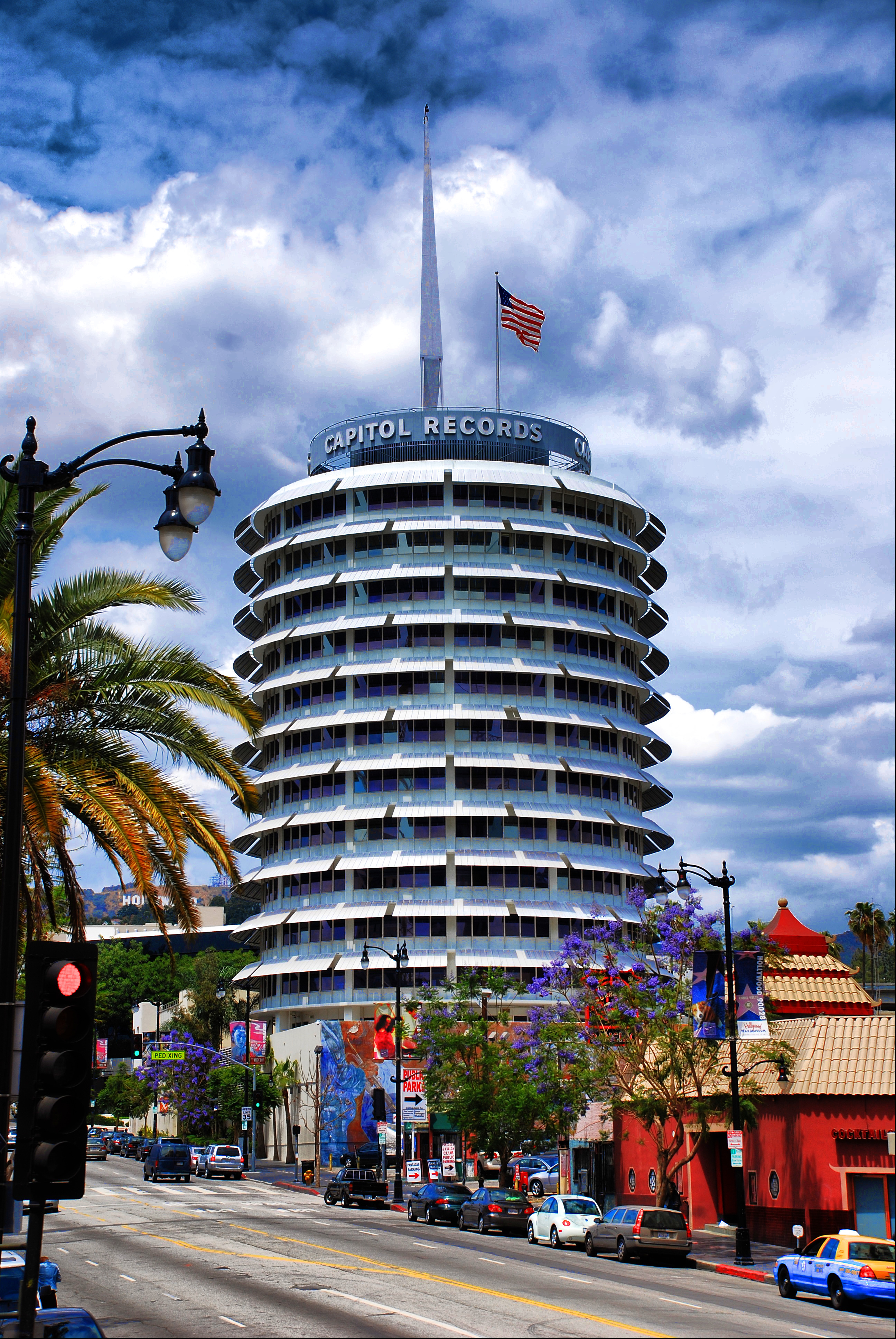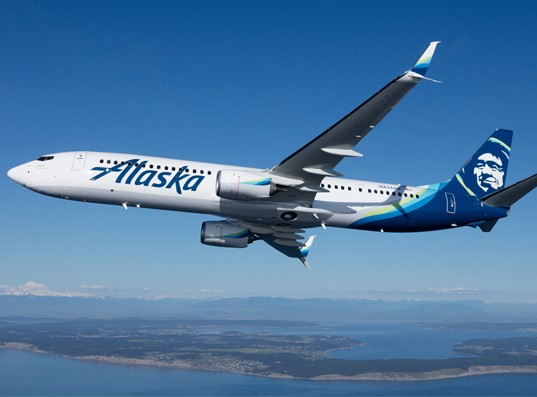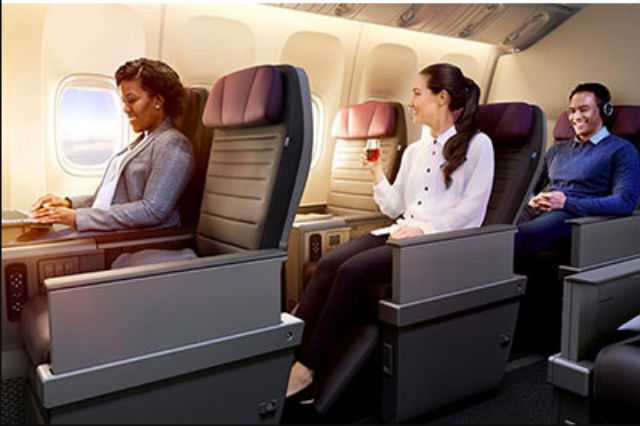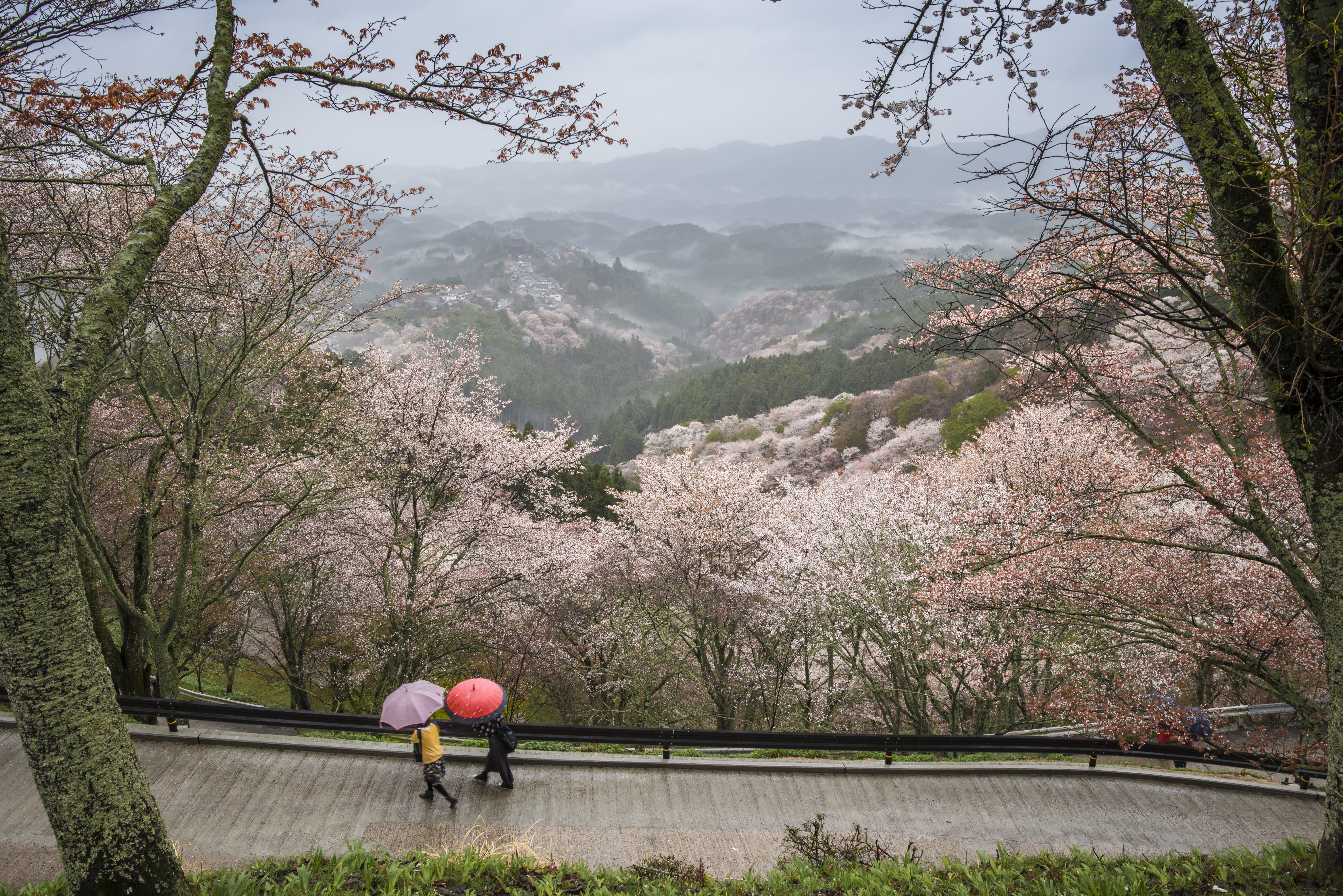Best places to grab a drink in Denver
Downtown Denver is relatively small, but there are dozens of places to drink.
Some are so great, you’ll be sad to know you wasted money elsewhere. Don’t choose lightly: From martinis to mules, this barhop guide will help you find local spots and spare your wallet.
First Draft Taproom & Kitchen
First Draft is Denver’s iconic self-serve beer bar. They offer a large, constantly changing selection that features different breweries from all over Colorado and the U.S. It’s pricier on a drink-by-drink basis, but the cheapest place if you’re going for a sampling experience.
Best beer on tap: Telluride Tempter IPA
Crowd pleasers: Quick service and no lines; Busy atmosphere but spacious seating.
The Retro Room Salon and Lounge
Ever wish you could have a drink while someone cuts your hair? The Retro Room bar doubles as a beauty salon and massage parlor. The drinks are good and fairly priced during happy hour.
The haircuts are quality too, but my favorite part is the employee vibe. You can see how happy they are to be involved with such a unique concept. Stop in Sunday for $3 “U-Call-Its” all day.
Best drink: world famous pickle shot
Crowd pleasers: Busy atmosphere but spacious seating; Double happy hour (daily and late night)
The Ginn Mill
Hope to catch a Rockies game but couldn’t get a ticket in time? Grab a drink at The Ginn Mill instead; it’s as good as nosebleed seats.
The historic, and misleading, nickname actually means local tavern and was given to reflect a simpler time. The bar’s antique atmosphere surely matches its name. The usually young crowd is laid back and friendly, but it might be too busy to notice.
Best drink: It doesn’t matter, they’re all cheap.
Crowd pleasers: Happy hour deals: $2 Coors draft or well drinks, $3 you-call-its; Free popcorn
ViewHouse Eatery, Bar & Rooftop
A drastic shift from the party at The Ginn Mill, you’ll find great prices, an awesome panorama and wonderful service at ViewHouse. Whether you’re looking for a quick drink or a bartender to take care of you all night, this is the place to go. A very modern feel, and a bit more upscale, it was voted one of “America’s Most Popular Bars” in 2014.
Best drink: craft beer of the month
Crowd pleasers: Patio (brew and view); Knowledgeable and friendly staff
The Refinery
This bar is a great place to become a regular—it seems like everyone knows each other. I come here for the cocktails, and the prices, but service is always on point and the regulars give it a cool local vibe. Again the outdoor seating is the best: classy and cozy.
Most interesting drink: Buzz Button
Crowd pleasers: Cheap, delicious food; All-day happy hour Sunday
The 1up – Lodo
If you enjoy gaming and drinking, take a trip to 1up. The arcade bar has tons of old school games, throwback decor, drinks and standard bar food. Weekday happy hour deals are solid, and the drinks are made strong. It’s got a vintage dive bar feel.
Most vague drink: Mystery shot
Crowd pleasers: Pinball tournaments; Giant Jenga
Hayter’s & Co.
This is the best sports bar in Denver to watch your favorite teams. On Rockies game days, they have all you can drink beers for $12. Don’t expect a high-class meal, but the food is great for pub grub and the crowd varies from all ages.
Best drink: Hayterade
Crowd pleasers: Rooftop seating; Beer pong
Freshcraft
If you need a booze break to fill your stomach with some substance, this is my favorite spot for food. Beer-wise, they have 25 rotating taps, classic cocktails and a lengthy wine list. I’d say of all my recommendations, this is the best local spot.
Best beer on tap: Dry Dock Amber Ale
Crowd pleaser: Mainly Colorado brewed beer; Quieter bar experience
Gaslamp
If I was hired to write a slogan for this bar, it would be, “always busy, always friendly.” It can get a bit crowded on the dance floor, but their bartenders handle the lines well. The nice, upbeat crowd is perfect for people who don’t need a seat to enjoy their drink.
Pro-tip: they list special deals exclusively on their Facebook page.
Best drink: Vodka and RedBull slushie
Crowd pleaser: Live DJ; Ping pong
Denver Booze Cruise
This two-hour downtown bar crawl is perfect for big group trips or special occasions. The bike bar features a sound system, lights and a resourceful tour guide. I wish I would have found their coupon on the Denver Things To Do page before I went, but I’d say it was worth the full price.
Crowd pleaser: “Private” party; Uber free, walk free
If you’d like, all 10 bars are in walking distance from each other. Follow this map for my recommended route, location and hours.
Is New Zealand the most food-friendly culture ever?
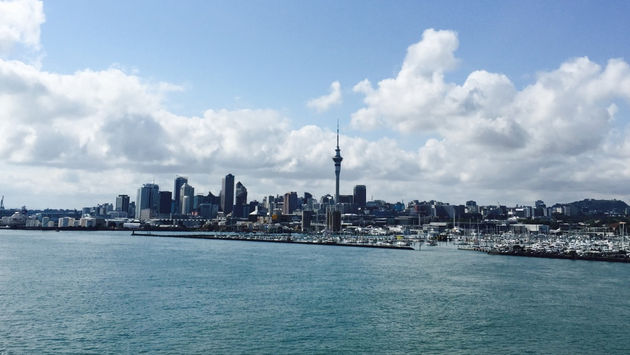
New Zealand tourism is focused on targeting Middle Eastern guests with new halal menus.
The New Zealand Herald reports that “New Zealand tourism bosses are chasing the multi-billion dollar Muslim tourist market by launching a halal food guide and pushing it in Southeast Asia,” says Kurt Bayer for the paper.
The culinary tourism directory has been developed with the backing of the Kiwi Muslim Directory and Federation of the Islamic Associations of New Zealand (FIANZ), according to the New Zealand Herald.
“New Zealand food goes way beyond fish and chips and barbecues — our chefs have developed a distinct Pacific Rim cuisine,” said Steven Dixon, Tourism New Zealand’s regional manager for South and South East Asia,” notes the article.
New Zealanders understand the challenges Muslim travelers face.
“We acknowledge how important access to information about suitable dining options is to the overall experience of our Muslim visitors and this guide demonstrates our commitment to further enhancing New Zealand’s position as a visitor destination among this audience.”
Investing in a guide like this is a smart move as Muslims are making up more of the travel market than ever before.
Muslims are forecast to make up almost one in three of the world’s population and halal tourism to be worth over $200 billion by 2025, reports the New Zealand Herald.
New restaurants and chic bars in Cape Town
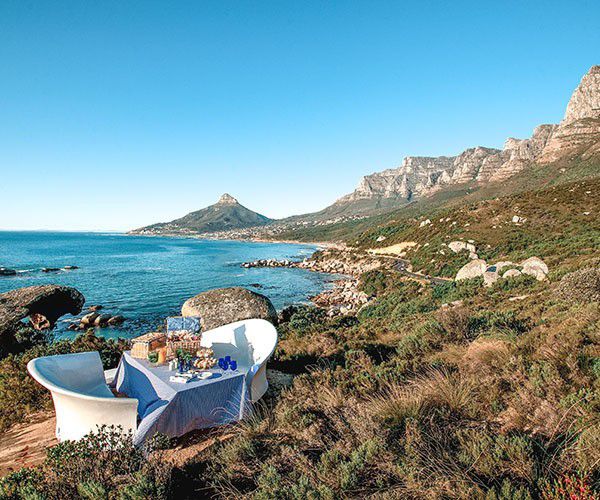
With its sunny disposition and natural beauty, the city of Cape Town has always been a popular destination. But, its bourgeoning art scene and never-ending slew of new restaurants and chic bars are serving to continuously broaden the Mother City’s fan base. This evolution is making the city, overlooked by Table Mountain, a must-visit in 2018 and beyond.
From grassroots to an international stage
You’d have been hard pushed to miss the opening of the Zeitz Museum of Contemporary African Art (MOCAA) in September last year. This ground-breaking establishment is the first major museum on the continent to showcase contemporary African art. Housed in a creatively reimagined grain silo by the city’s waterfront, its reach was global and Cape Town’s status on the international art scene skyrocketed.
Inside the Zeitz MOCAA, you’ll find a surprising and refreshing diversity of works, from sculptures and video installations to paintings and photography, by artists from all over Africa and its diaspora.
Beyond the walls of the Zeitz MOCAA, there’s plenty more to explore of Cape Town’s art scene, from high-end to street art.
Everard Read/CIRCA showcase local artists, such as one of the most recognised South African artists, Lionel Smit, who has a studio just outside the city. Gallery Momo is an excellent contemporary art gallery, located in the CBD. The Cape Gallery, also in the CBD, is one of the city’s oldest with a collection ranging from early Cape painters to modern street artists.
Head to Woodstock, a short drive from Cape Town’s CBD, for the edgier side of the city’s art scene. Check out the Art It Is gallery and take a street art tour around Cape Town’s most hipster neighbourhood. It’s home to vibrant and interesting pieces by famous local and international artists. Guide Juma Mkwela of Township Art Tours is an artist originally from Zimbabwe; he personally knows many of the people behind the artworks and murals you’ll pass, offering an insider’s view of the city’s street art scene.
Fine dining and fusion food
Here in Woodstock, you can also delve into Cape Town’s ever-evolving culinary world.
The neighbourhood is home to one of the best restaurants in the country, The Test Kitchen, run by chef Luke Dale Roberts. It offers the height of fine dining with an experimental tasting menu and a light and dark room, which guests move between during dinner.
To complement the food on offer in this area, you can walk down to the fabulously inventive Woodstock Gin Company for fynbos infusions.
This colourful neighbourhood, two kilometres east of the city centre, is the beating heart of Cape Town’s foodie revolution. It’s a fantastic sign of what can happen when likeminded businesses open their doors in the same area.
Elsewhere in and around the city, a food lover’s options are infinite. Another of the country’s celebrity chefs, Liam Tomlin, opened Indian-inspired tapas restaurant, Thali, in 2016. 2017 saw Ethiopian and Korean-Japanese fusion food openings, courtesy of Lucy Ethiopian and Haru, respectively. Hokey Poke bought Hawaiian poke bowls to the city, and Sea Breeze Fish & Shell made waves with its popular ‘10 bucks a shuck’ happy hour (around 60p an oyster) from 5pm to 6pm Monday to Saturday.
Following the global trend, health and veggie joints are all the rage here. Two further 2017 openings included Bowls on Bree and Lekker Vegan, the latter promising ‘vegan gourmet junk food.’
Cape Town wouldn’t be a trend-driven foodie city without an array of options for a daily flat white fix. Jarryds of Sea Point, Hemelhuijs, and Clarke’s, are all cult favourites, while hot new properties include the leafy Harvest in Bo-Kaap and 2018’s French-style coffee bar, Coco Safar.
Evolving cities make for exciting travel destinations. In 2018, Cape Town is certainly one such destination. The variety of what’s on offer, whether it’s a visit to Robben Island or a trip to the District Six Museum, is second to none. The food and culture expansion it’s currently undergoing underpins how this wonderful city continues to combine its rich history with a worldwide hunger for the new, the exciting, and the bold.
By Heather Richardson www.avis.co.uk/inspires/
Discover Tulum, Mexico
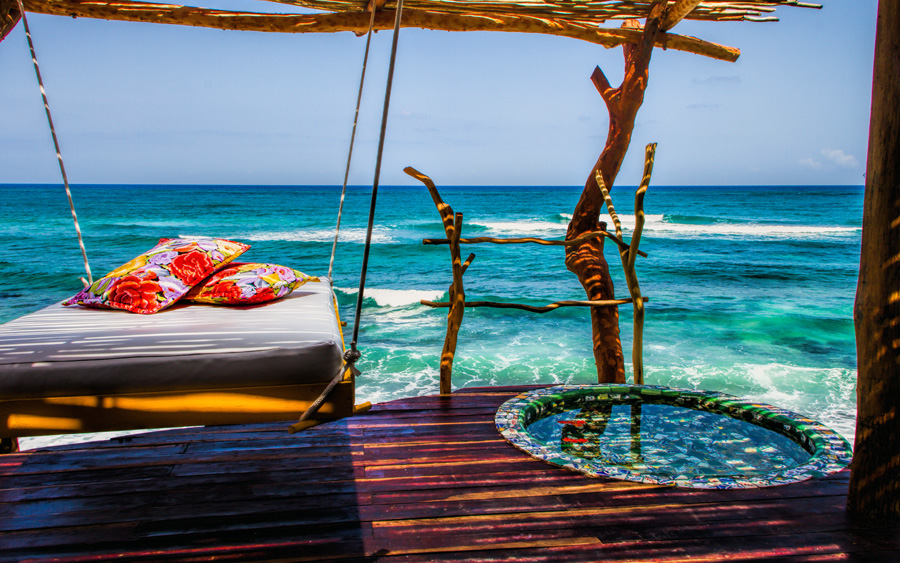
There’s an emerging beach town on the horizon in Mexico. And this time the spotlight is not on Cancun or Cabo San Lucas. Situated on the coast of the Yucatán Peninsula. If you have not heard of Tulum yet get ready to hear more in the future. As this beach town continues to grow as a popular getaway for those who are seeking more than a “traditional beach vacation.”
And the hotel industry has taken notice. Take the recent announcement from the Dream Hotel Group with news that the company wants to add a hotel in Tulum. Additionally, the town continues to expand with an increase of eco-friendly boutique hotels that offer experiences like yoga, meditation and sweat lodges. Hotels on the beach worth a visit include Azulik Hotel Tulum & Maya Spa, Ahau Tulum and Hotel Calaluna Tulum.
Travelers can fly into Cancun International Airport and choose from a range of transportation options to Tulum. Just a 90-minute drive from the airport, visitors can travel either by shuttle, bus, taxi, or rent a car. Once you arrive, a unique way to explore the beaches is with a bike.
Apart from the picturesque crystal clear beaches, ancient ruins from the Mayan civilization surround Tulum. In this area, tourists can explore the Mayan Ruins for a small entrance fee. Arrive early and be prepared to wait in a long line, as this is one of the most popular attractions for tourists. Bring comfortable walking shoes and your swimwear, as you will have access to a cliffside beach just below the ruins. If you are feeling up to exploring more of the Mayans, plan a short trip to the pyramids at Cobá (a 45-minute drive) or to Chichen Itza (2 hour- drive) away from Tulum.
Tulum is central to breathtaking cenotes. Whether it’s the fact that you find yourself swimming under a cave or surrounded by the jungle. Around the world, visitor’s flock to swim, snorkel or scuba dive in these natural wonders. And what exactly is a cenote? A “sinkhole or natural well” as defined by the digital dictionary Dictionary.com. Discover the Gran Cenote, Dos Ojos (Two Eyes) and the lesser-known cenote Cape-Ha. Surrounded by the jungle, a hidden gem like Cape-Ha is a must visit.
So, naturally, after a swim if you find yourself with an appetite. You can walk from cenote Cape-Ha next to an outdoor fire pit restaurant called Safari. Try the Yucca Truffle Fries, Esquites, Tacos and a wash it all down with a refreshing signature cocktail. Trust me on this one. Besides the delicious food, the restaurant creates the perfect ambiance with a sexy playlist of worldly music- just another prime example of what makes Tulum so special.
It’s worth mentioning, as well, that Tulum hosts a vibrant nightlife of bars, music and dancing. Famous DJ’s, like Matthew Dekay and Yokoo, travel to Tulum to perform at events like the Full Moon Party. While you are there, don’t miss an evening at Gitano. A very popular out door restaurant and bar that has a weekly line-up of exceptional international DJ’s and musicians perform for you.
For those wanting to truly have a one-of-a-kind experience, make reservations at the restaurant Kin Toh located inside the Azulik Hotel Tulum & Maya Spa. Where else can you grab a drink and lay on a net nestled inside a tree house overlooking the ocean? Furthermore, you can enjoy a dinner in a “private wooden nest.” Whether a solo traveler, family trip or a romantic getaway- there’s something everyone can enjoy in Tulum. By: Jeannette Ceja
Unexpected Islands
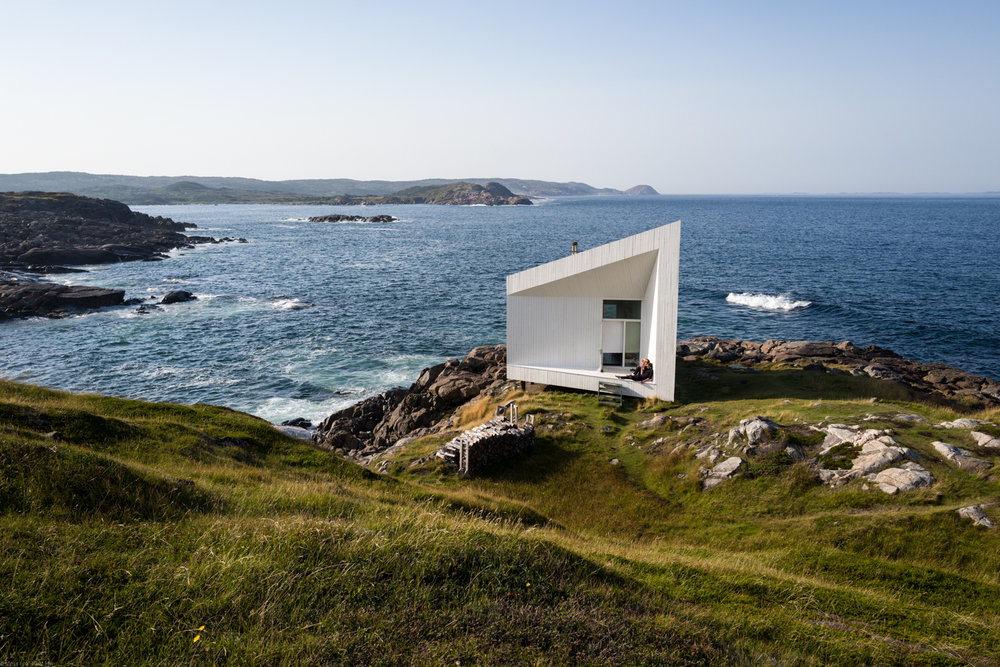
By Natalie Compagno and Greg Freitas
Islands are inherently sexy. Some are tanned, hot, laid-back, and obvious—think Kauai or Capri. Other islands are darker, mysterious, replete with misting ice, jagged rocks, and a tough, come-see-what-I’ve-got attitude. When travelers outgrow their easy island relationships, they turn to something more adventurous: islands that test their endurance and leave them wanting more. Welcome to the wild side of island life.
Tasmania, Australia
Don’t allow the charming nickname of Tassie to mislead. This island challenges visitors with its overwhelming offerings, from fine wine and beer trails to revolutionary art, and from week-long treks to wild animals. Tasmania is also breathtakingly beautiful, and its clean surrounding waters provide the freshest fish in the world. The capital Hobart is uber-hip, don’t arrive without proper attire.
Check into the Henry Jones Art Hotel in Hobart for a luxurious, cultivated jumping off point for all Tasmanian adventures. This hotel is Australia’s first dedicated art hotel and hosts rotating art throughout its well-designed urban canvas. Arrive hungry, Hobart is a coveted culinary hotspot. Frank, Peacock & Jones, and Preachers are all divine, but for an insider, cozy neighborhood haunt reserve at Templo. Wine lovers can grab picnic fare at the Saturday Salamanca Market and then drive through stunning terrain to the Tamar Valley for wine tasting. Tassie is a temptress, it’s okay to indulge.
Of the many attractions that beckon, there are a few musts. MONA, the Museum of Old and New Art, should be at the top of any list. Imagine a state-of-the-art museum with ancient art, juxtaposed with controversial avant-garde works, set in a cavernous rock and metal masterpiece. The grounds host a winery, brewery, and social club along with vast views of the ocean. One day is not enough.
Wildlife and rare animals abound. Be very Aussie and try some trekking on Maria’s Island, Tasman National Park, or Lake St. Clair National Park. A Tasmania trip is not complete without a meet and greet with its most famous marsupial – the Tasmanian Devil. Head to the Bonorong Wildlife Sanctuary and meet those perky Devils and their friends – koalas, wombats, and kangaroos. This very special place works hard to save and nurture Tasmania’s rare beasts.
The Aurora Australis, or the Southern Lights, the world’s largest lavender farm, and the award-winning Sullivan’s Cove whisky are a few more “only in” Tassie checklist items, so head Down Under and get exploring.
Fogo Island, Newfoundland and Labrador, Canada
Serenity, design, and small-town charm swirl together on this remote and magical island. Fogo Island is located in far Eastern Canada and hosts a mere 2,400 residents on its 15-mile-long isle. Despite its size, Fogo Island has the kind of activities that make visitors wish they could stay forever. In early summer icebergs from Greenland float by, in the height of summer fishing, boating, and hiking entertain and in the fall blueberry picking makes desserts and dishes delicious. Anytime is a good time to walk along Sandy Cove with the locals. Never turn down an invitation to a Shed Party as that’s when Fogo Islanders gather in a backyard “shed” for music and merriment.
Fogo Island Inn is the place to stay to enjoy Fogo Island’s scenery and culture. At $1429 per person per night, double occupancy, no expense has been spared for guests’ immersion and comfort. The Inn is owned by the Shorefast Foundation, a non-profit dedicated to promoting the culture and visibility of the island. The structure itself is a modern rendition of a traditional Fogo Island stage, a stilted fishing hut over water, and its interior pays homage to the woodworking and quilting artistry on the island. A small conference center, gym, library plus rooftop sauna, and hot tubs replete with sea views are available for use. The inn also has isolated, striking studios available to host artists throughout the year, nurturing creativity on the island.
Fogo Island Inn is a luxury experience but the real value comes from the people guests meet and the nature to which they are exposed. The inn encourages people to venture out and dine elsewhere on the island. For an all-inclusive this is admirable, but even more noteworthy – the inn will pick up the tab.
Abu Dhabi, United Arab Emirates
In essence, Abu Dhabi is an island made up of more than 200 islands. Each island has its own personality, ranging from manmade to exclusive, and private to skyscraper-studded. The Emirates are fast-paced, gorgeous, and exotic. Visitors must arrive with plenty of energy, ready to explore its innovative designs and buzzing desert culture. Home to coconut palms, super yachts, wildlife reserves, Ferrari World, and winner of the “World’s Leading Sustainable Tourism Destination,” Abu Dhabi is sure to amaze.
Yas Island and Sir Bani Yas Island, are two very different oases, yet both share the Abu Dhabi focus on excellence in tourism and luxury. An emerging entertainment destination, Yas Island is home to the high-octane Yas Marina Circuit–host to the annual Formula One Grand Prix. Guests can channel their inner race car driver for a day through a series of track day packages designed to raise the pulses of those who feel the need for speed. The circuit’s centerpiece is Yas Viceroy Abu Dhabi, built half on land and half over water–the only five-star hotel in the world to straddle an F1 race track.
For more racing adrenaline, check out Ferrari World Abu Dhabi the world’s first Ferrari-branded theme park. The park tells the Ferrari story with revved up passion through more than 20 rides and attractions, plus interactive shopping and Italian dining experiences.
Calling all Super Yachts! The Yas Marina competes with the Caribbean and Europe to dazzle the world’s richest seafarers. If being in the water is better than bobbing on top of it then try Yas Waterworld, a waterpark so large it fits 43 rides, slides and attractions. For the brave there is the world’s first, and largest hydromagnetic-powered, six-person tornado waterslide. Thrill seekers love the three-meter high waves on Bubble’s Barrel, which has the world’s largest surfable sheet wave for flowboards and bodyboards.
Sir Bani Yas Island brings the softer side of Abu Dhabi to tourists, without skimping on five star ratings. A nature-based destination alive with wildlife and adventure activities, a 5-star boutique hotel, luxury villas, purpose-built stables and historical sites, Sir Bani Yas Island is one of the eight Desert Islands of Al Dhafra. More than half the island is the Arabian Wildlife Park, one of the region’s largest wildlife reserves, home to 10,000 free roaming animals including Arabian oryx (brought back from the edge of extinction), gazelles, giraffes, hyenas, and cheetahs. Guests can take a 4×4 Nature & Wildlife Drive of the park accompanied by expert guides.
Discerning travelers can enjoy five-star accommodations to suit their taste with Anantara Hotels Resorts & Spas retreats on the island. For a truly Arabian Nights’ gallop through time, imperial-like stables offer a variety of equestrian activities and lessons, each tailored to meet individual needs. A perfect ending to any island escape, it’s time to ride off into the sunset!
Music: Now & Then
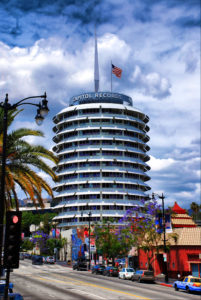
By Andrew Chrisanthus
As a music industry professional with 20 years of experience in all facets of the industry, I have worked with multiple Grammy winners and Billboard charting artists. Working with a range of acts from Asleep at the Wheel to Lady Gaga and all things in between gave me a wide perspective on all things music. The years on the road as a Tour Manager provided me unique insight into the cities in which we performed as well.
I love to focus on the musical past & present of a city, in all its facets. The people, places, and things of these cities will help us explore the now and then. Let’s look at Los Angeles
The connection of music and architecture has been seen throughout human history, and that connection can be seen in Los Angeles in just a six mile stretch
On a sunny Hollywood afternoon we find The Capital Records Building. Built in 1956 as “The House That Nat Built” due to Nat King Cole’s enormous success for Capital Records, this modern marvel has become a Los Angeles icon. Though, in today’s digital age of music it is often overlooked that this building is still Capital’s world headquarters, and contains Capital Studios. The studios which are broken into three main recording areas also feature echo chambers engineered by Les Paul. Frank Sinatra may have made these studios famous, but the likes of Katy Perry, Beck and more still use them.
Just six miles down the road in bustling downtown L.A. we find a much newer architectural marvel well on its way to becoming a Los Angeles and musical icon. The Walt Disney Music Hall designed by famed architect Frank Gehry opened in 2004 to much acclaim. Housing the L.A. Philharmonic, it is the perfect match of sound and vision for this glorious hall. Along with yearly offering of world class classical music this beautiful building also offers a wide variety of performers. From Herbie Hancock, Art Garfunkel, and all the way to German KrautRock pioneers Kraftwerk , this world-class building is always filled with world-class music.
When you’re in L.A. you can pay both of these spectacular pieces of architecture, and holy houses of music a visit. The Capital Records building has a gift shop, offers tours by appointment and is best viewed at sunset. Walt Disney Music Hall offers year round programming at various ticket prices, as well as having its own gift shop, and looks different in all types of light, so pay it a visit anytime. Enjoy the architecture, enjoy the music, enjoy L.A.
Most luxurious airport hotels
We spoke to our friends at JustFly, a platform with more than 400 different airline partnerships in order to provide you the best deals on flights, to find out where some of the most luxurious hotels in the world are located. Enjoy a refreshing swim in an impressively landscaped pool, embraced by rainforest-style gardens, followed by a delicious cocktail and some exquisite Cantonese food. Or choose a rejuvenating treatment at a selection of no less than 19 Thai-style spa suites. Or perhaps curiosity may get the better of you, when you hear about the possibility of sipping a lager made from homegrown honey.

These are some of the wonderful experiences available at five of the most luxurious airport hotels in the world. Admittedly it was a challenge to choose only five, as the competition of luxury airport hotels continues to get tougher. Read on to discover which ones they choose and why…
1. Singapore: Crowne Plaza Changi Airport
It’s hard to imagine that you’re at Terminal 3 when you’re soaking up the sun surrounded by rainforest-style gardens. But you are. Located in Singapore’s Changi Airport, the Crowne Plaza Changi Airport Hotel has been voted the World’s Best Airport Hotel by Skytrax for the last three years.

Perfect for business or pleasure, the ultra-sleek, modern luxury hotel boasts 563 rooms along with a beautiful swimming pool, an enormous courtyard with those lush rainforest gardens, a spa and several restaurants. Bar75 is the place to be at night for 1970s style glamour while sipping an exotic cocktail in one of the bar’s intimate nooks
2. Hong Kong: Regal Airport Hotel
Travelling as a couple? Lie down under a canopy while you enjoy a couples massage. This is just one of the many choices of pampering on offer in the 19 Thai-inspired spa suites, at the Om Spa. The spa’s mosaic steam room is the perfect first stopover to detox from your flight, and then you can head off to relax in the outdoor jacuzzi. The six on-site restaurants give plenty of culinary choices, including French patisserie and excellent Teppanyaki.

Directly connected to Hong Kong International Airport’s passenger terminal, the Regal Airport Hotel has been honoured with the title of the World’s Best Airport Hotel, by Business Traveller UK Magazine, for nine years in a row. Ideally located for those going to the Asia World Expo Convention Centre, the hotel offers world-class meeting facilities. Contemporary, sleek guest rooms afford super views over the the runways and airport, through double-glazed sound-proofed windows, which let in abundant natural light. Other facilities include an indoor pool and a state-of-the-art gym.
3. Vancouver: The Fairmont Vancouver Airport Hotel
Fancy a bit of plane-spotting and some breathtaking views? The Fairmont Vancouver Airport Hotel’s floor-to-ceiling windows offer unobstructed front-row views of the North Shore Mountains, Gulf Islands and the runways. The 386 beautifully appointed guestrooms are spacious and sound-proofed.

For three consecutive years, Skytrax has voted the Fairmont Vancouver as the no. 1 Airport Hotel in North America. Whether you are opting for a day room or an overnight stay, you should definitely sample the unique lager, which is brewed from homegrown honey. Located just above the US departures terminal, the hotel also boasts an excellent day spa offering around 130 different treatments, an indoor pool and an award-winning restaurant. The perfectly named Jetside Bar has live music every single night.
4. Munich: Hilton Munich Hotel
The Hilton Munich Hotel offers the best of both worlds, as it’s located just beside the Rosenheimer Platz S-Bahn station, which has a direct connection to the airport, yet is within walking distance of downtown Munich. The five-star hotel offers spacious Art-Deco inspired guestrooms, equipped with state-of-the-art modern facilities. All rooms are sound-proofed, and feature either courtyard or atrium views.

A spectacular space, with light-flooded glass and space for around 1000 people, the atrium is one of the hotel’s highlights. But perhaps its crowning glory is the lobby bar, where you can sip strong cocktails late into the night, surrounded by 60-foot tall palm trees. Throughout the hotel facilities have been perfectly designed for all types of visitors. Facilities include a 24-hour fitness centre, a spa, a heated indoor pool, executive floor and lounge, and two restaurants. The hotel proudly serves Starbucks coffee!
5. London: Sofitel London Heathrow
Last but certainly not least, is the award-winning Sofitel London Heathrow Hotel. From spectacular events to sipping champagne, the Sofitel couldn’t be any more convenient for Heathrow Airport. The hotel, which is linked to Terminal 5, blends modernist architectural elements from around the globe, and offers exceptional experiences to satisfy all of the senses. From gourmet French cuisine, to top-notch Champagne, the ambience of the Sofitel London Heathrow is super cosmopolitan and reminiscent of a luxury city hotel.

It’s hard to imagine that you’re connected to Terminal 5 of the world’s busiest airport, when you find yourself surrounded by zen gardens, fountains and abstract sculptures. The hotel is perfect for a pleasurable stopover, and wonderfully equipped for you to curate an inspirational business event. All of the 605 guestrooms feature generously sized beds dressed in Egyptian cotton, along with oversized bathrooms, with rainfall showers and deep-soak tubs. Central London can be reached for sightseeing on a 21-minute express train.
This post is sponsored by JustFly. By Paul Johnson
Smoked on the water: Cruise lines bring BBQ out to sea
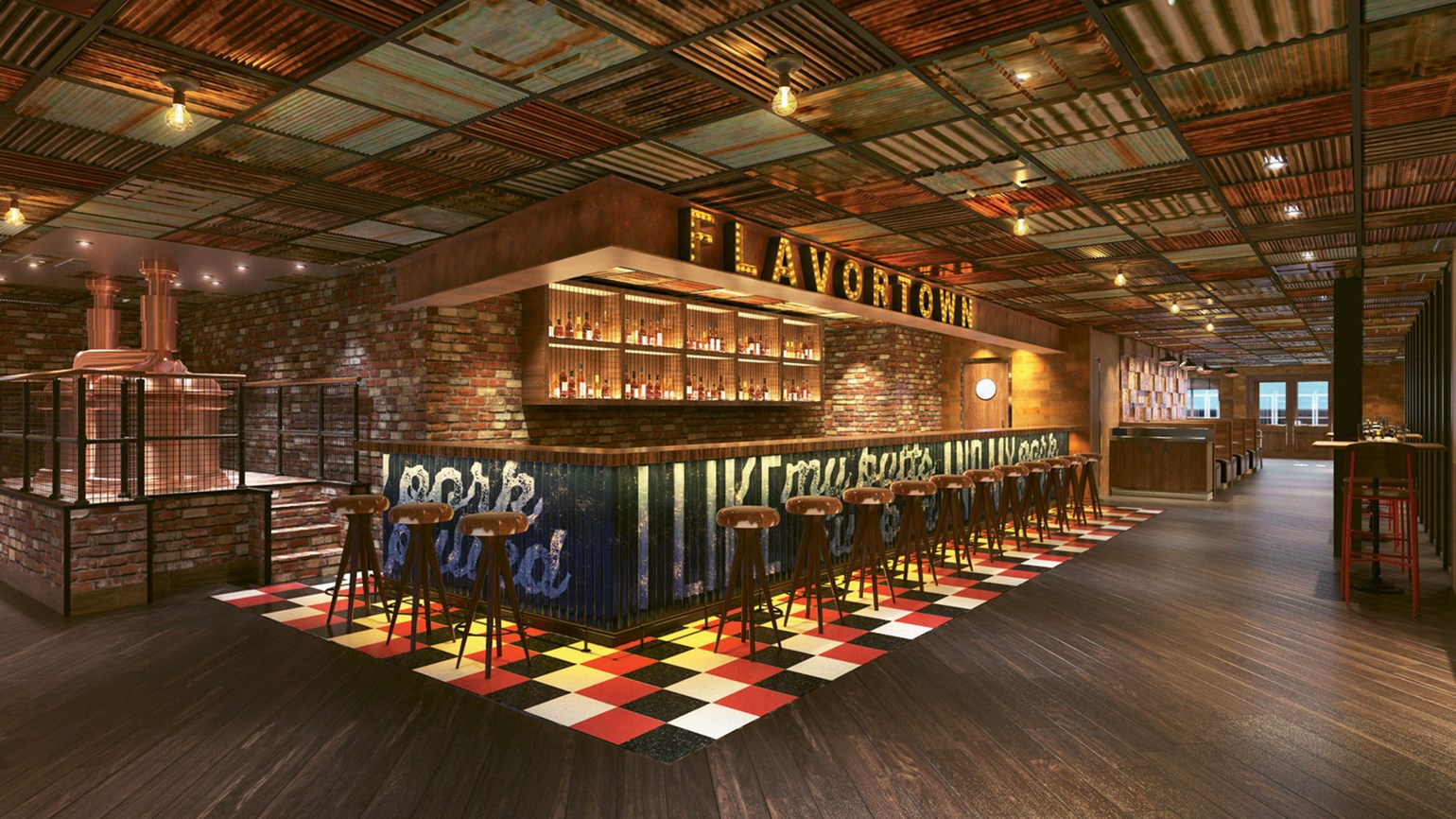
One of the hottest culinary trends on the high seas is barbecue, a made-in-the-USA specialty that is popping up on several cruise brands eager to offer new and distinctive culinary experiences.
Carnival Cruise Line launched the movement toward slow smoking in 2016 when Guy’s Pig & Anchor Bar-B-Que Smokehouse was added to the Carnival Magic’s promenade deck during a drydock.
The venue was developed in cooperation with Guy Fieri, the roadhouse TV chef whose Guy’s Burger Joint has become a popular eatery on Carnival ships.
Last year, it was Princess Cruises’ turn. It added Planks BBQ to the Caribbean Princess, where for a $12 cover charge diners can create a “plank” consisting of four smoked meats from a menu of six choices, including chili-spiced roasted tri-tip and hard-cider barbecued pork ribs.
This year, Norwegian Cruise Line is jumping on the bandwagon with Q, billed as a Texas smokehouse with a contemporary vibe. An alternative dining restaurant on the upcoming Norwegian Bliss, Q will serve a selection of brisket, ribs, chicken and sausages freshly smoked over hickory, oak and pecan.

The Celebrity Edge, a ship entering service in November 2018, will serve barbecue at the Rooftop Garden Grill. It will have a $45 cover charge.
Q’s pricing will be a la carte, and there will be plenty of creative sides, such as baked sweet potatoes smothered in pecan honey butter and cinnamon.
The road to smokehouse nirvana has been a long one, in part because of safety issues posed by the cooking process, and in part because of the exacting quality standards that authentic barbecue requires.
“We had to bring in officials from Lloyds Register [a ship design and safety consultancy] and do a lot of evaluation, a lot of study of the equipment and modifications to the equipment for fire safety,” said Greg Poplewko, Carnival’s director of specialty dining.
Poplewko worked with Old Hickory, a Cape Girardeau, Mo., manufacturer of the high-end smokers favored by Fieri. It took about six months of modifications and testing before they had a unit that could be brought on a ship.
“Then we had to make modifications for the health department standards, because it’s kind of an open area,” Poplewko said.
The smoker uses propane for heat, but burns wood blocks to smoke the meat. The exhaust is vented through shutters to a hood and is eventually expelled through the funnel, Poplewko said.
The Pig & Anchor, which is complimentary for lunch, is now also featured on the Carnival Dream, Vista and Breeze. In April, Carnival will expand the concept on its new Carnival Horizon by combining barbecue with beer at Guy’s Pig & Anchor Bar-B-Que Smokehouse/Brewhouse.
Carnival will serve a barbecue dinner in the 138-seat space, with prices ranging from $4 for appetizers to $18 for a pound of smoked prime rib.
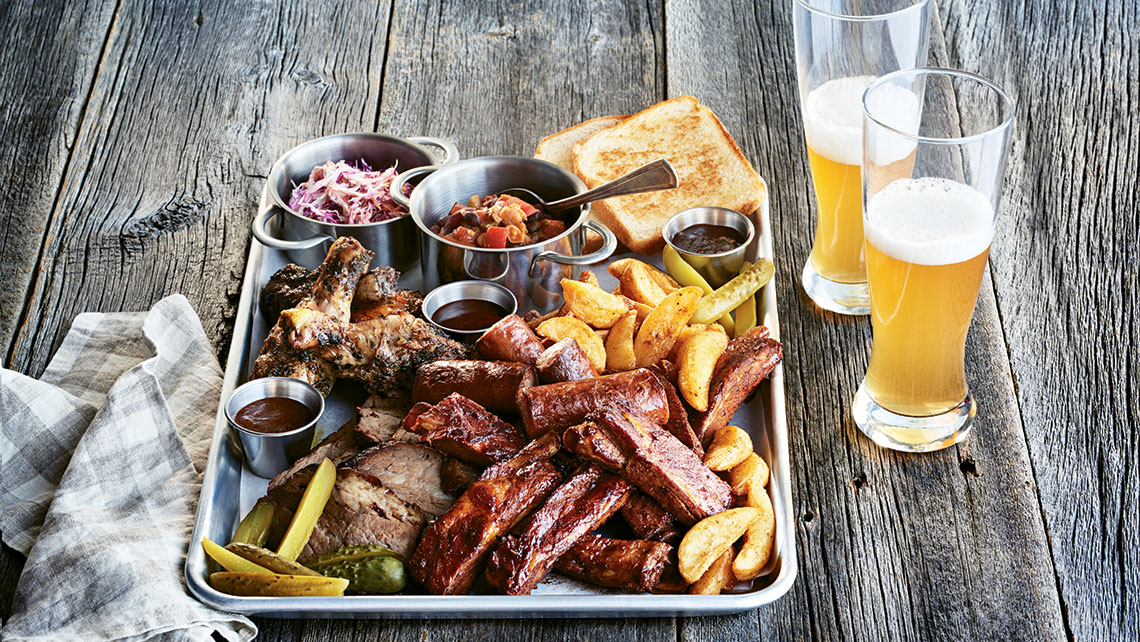
Joe Siragusa, CEO and owner of Plaza Vacations in Kansas City, Mo., said the barbecue option “definitely adds to the appeal of a cruise, especially with something as universally appreciated as barbecue. As long as they keep it at a reasonable price point, then I think it’s going to go gangbusters, absolutely.”
Planks BBQ, situated on Deck 15 near the Caribbean Princess’ World Fresh Marketplace restaurant, serves a buffet-style lunch and breakfast at no charge before turning into a barbecue emporium in the evening.
Q, located on Deck 6 of the Norwegian Bliss where the Supper Club is on the Norwegian Escape, was enabled by a new cooking technique with which meats can be authentically smoked onboard within safety rules, a Norwegian spokeswoman said.
While the menu is inspired by a Texas roadhouse, the decor will be contemporary and urban, providing a different sort of aesthetic than the cowboy-meets-junkyard style of many barbecue joints.
Pricing for Q will range from $3 for some appetizers to $30 for a platter with four meats and sides.
Airline ticket secrets: How to get the best value
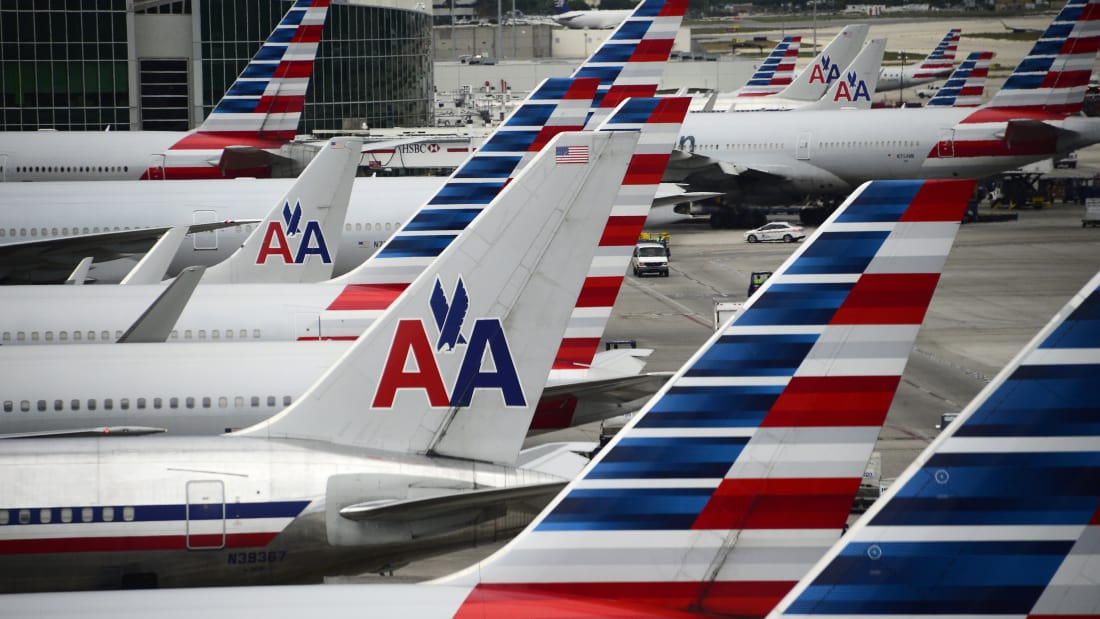
1. Know the code
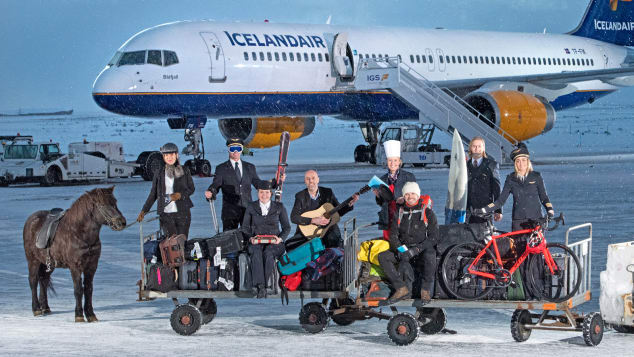
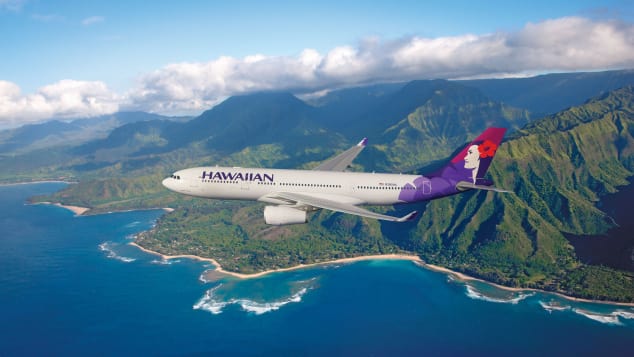
3. Save that boarding pass
United Airlines Rolls Out Premium Economy Class

United Airlines is not only rolling out a new premium economy class in international markets, it’s also looking at adding the product to select domestic routes, as well.
The airline revealed the plan at a presentation at a JPMorgan investors conference in New York, where it said it will also expand its lowest-fare type — basic economy — to transatlantic and Latin American markets later this year. Both American and Delta have already said they will offer that rock-bottom, highly restricted fare in international markets, as well, starting this spring.
With its multi-pronged class strategy, United could end up with four distinct types of coach fares on many flights: basic, standard economy, economy plus (with extra legroom) and premium economy (which might feature a better seat to distinguish it from the next best product).
The carrier would still maintain a first class on domestic flights and its business class, dubbed Polaris, on international routes. Creating distinct service classes has another benefit; they can be booked through GDSs, as opposed to the current practice of giving coach fliers a chance to buy an extra-legroom seat for a flat fee, usually through the airline’s own website.
“Segmentation allows us to compete for all customers,” is how United explained the rationale behind the varying service types, although it has yet to reveal details of how premium economy would work domestically. While this cabin section is popular on long-distance international flights, where customers are willing to pay a hefty premium to escape coach class, it has yet to materialize in the U.S. because it might not make economic sense aboard a smaller narrow-body plane. United said it will probably reveal details later this year but did not indicate when the domestic product will be available, if it does indeed get the green light.
For international flights, however, United said it is pressing ahead with its launch of premium economy to select destinations under the brand name “Premium Plus” later this year. While it has not unveiled a prototype yet, the seat is expected to be several inches wider than the normal 17-inch-wide coach seat, with inflight service featuring china dinnerware, complimentary alcoholic beverages, Saks Fifth Avenue blankets and pillows, and amenity kits. And United will join a crowded field; both American and Delta are already launching premium economy internationally and most major international carriers have had the product for years.
Just how far carriers can go with this segmentation strategy remains to be seen. Henry Harteveldt, a travel industry analyst with Atmosphere Research, said that a domestic premium economy class might be perceived as too similar to existing domestic first class. But on the other hand, recent research shows that consumers are looking more favorably on the unbundled fare trend, where everything from added legroom to WiFi access carries an extra price tag. “They say that it’s giving them more choice — why pay for what you don’t need?” he said.
What are the world’s safest – and least safe – airlines for 2018

Qantas once again tops the list, as airline fatalities and crashes reach all-time low.
Last year was statistically the safest on record for air travel, according to the Aviation Safety Network (ASN), which tracks aviation incidents and accidents.
The ASN found there were 10 fatal commercial passenger and cargo air crashes which killed a total of 44 people, way down on the five-year average of 17 crashes with 495 deaths.
Despite Donald Trump trying to claim credit for the drop in air fatalities, in fact the number of airline accidents have been on a steady global decline since 1992.
This is “all the more impressive” says CNN, “when you take into account that 2017 is also likely to be the busiest year ever for commercial flights”, with total global passenger numbers expected to exceed the 3.7 billion who flew in 2016.
But while passenger jet crashes hit an all-time low last year, some airlines fare far better than others when it comes to their safety record.
So who is top?
According to the Australia-based aviation analysis website AirlineRatings.com‘s annual list of the world’s safest airlines, Aussie carrier Qantas came out top for the fifth year in a row.
The rankings are based on a number of factors including the airline’s standing with international regulators, its fatality record over the past 10 years, the age of its fleet of planes, its result from an International Air Transport Association safety audit.
Developed with the help of the United Nations’ International Civil Aviation Organisation, the list analyses 409 airlines around the world to arrive at an unranked top 20, with Qantas the stand-out winner.
AirlineRatings.com‘stor-in-chief Geoffrey Thomas praised Qantas or being “the lead airline in virtually every major operational safety advancement over the past 60 years” without a single fatality in the jet era.
“But Qantas is not alone,” she added. “Long-established airlines such as Hawaiian and Finnair have perfect records in the jet era.”
The top 20 for 2018, in alphabetical order are:
Air New Zealand, Alaska Airlines, All Nippon Airways, British Airways, Cathay Pacific Airways, Emirates, Etihad Airways, EVA Air, Finnair, Hawaiian Airlines, Japan Airlines, KLM, Lufthansa, Qantas, Royal Jordanian Airlines, Scandinavian Airline System, Singapore Airlines, Swiss, Virgin Atlantic and Virgin Australia.
“Notably absent from the 2018 list are the US airlines Delta and United”, notes CNN.
It follows a five-day meltdown last April in which more than 3,200 Delta flights were cancelled in response to storms, and an incident on board a United Airlines flight when the video of a passenger being dragged off a plane went viral, seriously damaging the airlines’ reputation.
What about the least safe?
Of the over 400 airlines around the world that were monitored, those rated one star (out of seven) for safety all hailed from either Afghanistan, Indonesia, Nepal or Suriname.
They include: Air Koryo, Blue Wing Airlines, Buddha Air, Nepal Airlines, Tara Air, Trigana Air Service and Yeti Airlines.
In the case of Buddha Air, the airline has been unable to undergo a formal IATA Operational Safety Audit (IOSA) and become registered “as there are certain IOSA requirements which Buddha Air cannot comply with, through no fault of its own” it said on its website.
However, The National claims “it states that it still wishes to be measured against world airline safety standards, and also highlights the increasing problem of bird strikes in Nepal”. www.theweek.co.uk
7 Reasons to visit Charleston
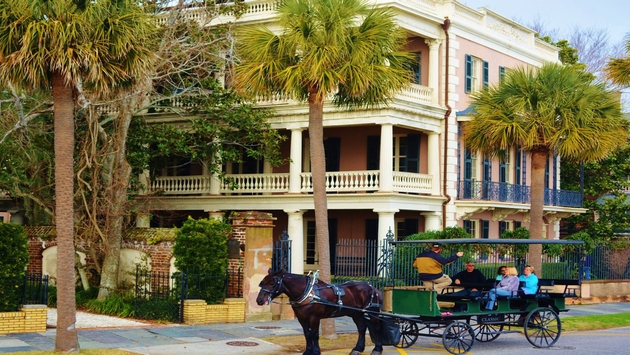
Elegant, charming and enchanting. These are just a few words we’ve used to describe Charleston, South Carolina.
Despite earthquakes, fires, hurricanes and Yankee bombardments, Charleston remains one of the best-preserved and most picturesque cities in America’s Old South.
Simply put, the city oozes with Southern hospitality. From the moment we arrived, it embraced us with a warm, welcoming hug.
It’s no wonder famous authors like Pat Conroy have penned books about this southern belle. Charleston has won its share of accolades, and after one visit here and we know they’re well-deserved.
For those who’ve never fallen under the magical spell of the Queen of the Lowcountry, here are some enticing reasons to go.
Colorful History
Founded by English colonists in 1607, the city played a key role in both the Revolutionary and Civil wars. A replica of the original English settlement can be seen on the grounds of Charles Towne Landing.
Charleston became the symbol of Southern resistance when the first shots of the Civil War were fired at Ft. Sumter. Battery Park, with its cannons, historic statues and stately oaks provides spectacular views of the Charleston Harbor.
Guides dressed in Colonial attire bring history to life at The Old Exchange/Provost Dungeon regaling visitors about pirates and patriots. And we loved touring the historic naval ships at Patriots Point, like the legendary WWII aircraft carrier, the USS Yorktown.
But, what we love most about Charleston is that history abounds here—on its cobblestone streets and markets, in its museums and monuments, and in the bloodline of its native population.
Magnificent Homes and Gardens
Like the song lyrics, “nothing could be finer,” there truly is nothing finer than Charleston’s well-preserved Victorian antebellum architecture.
And there’s no better way to see all these splendid mansions and their perfectly manicured gardens than by taking a horse-drawn carriage tour through the historic district. The extent of classic Georgia, Federal, Greek Revival, Italianate and Victorian period homes is unparalleled anywhere else in America.
Each season, the Historic Charleston Foundation, Festival of Houses and Gardens or the Preservation Society conducts home tours and takes visitors inside these ornate wrought-iron gated and wonderfully-restored masterpieces.
And world-renowned Rainbow Row named for its thirteen pastel, multi-hued 18th-century row houses is a not-to-be-missed iconic site.
Antebellum Plantations
Stately plantations just minutes from downtown Charleston offer glimpses of grandeur from its storied past.
Charleston’s most-visited is the magnificent 17th- century Magnolia Plantation. With its moss-covered oaks and spring-blooming azaleas, the elegant estate is the epitome of the Old South, evoking images of the famous movie, Gone with the Wind.
Boone Hall Plantation, the symbol of southern heritage, is without a doubt America’s most photographed plantation. With its iconic avenue of the oaks, there’s no doubt why this once-thriving cotton plantation was featured in the movie, The Patriot and the North and South mini-series. As we walked the grounds we could only ponder the notion that “if only these trees could talk.”
The sole surviving Ashley River plantation, Drayton Hall, renowned for its rice and cotton production, is a story within itself. This stunning Georgian structure survived Civil War distress and hurricanes. Well-preserved, the home remains true to its original state, as it’s never been renovated or updated.
Churches and Cemeteries
The spires of St. Michaels and St. Phillips were long used by mariners as navigational aids for ships returning to port. Both are now historic landmarks. St. Michaels hails as the oldest church in Charleston. Often called the Holy City, many fascinating historic churches are within walking distance here. Their graveyards, however, yield even more intrigue.
The cemetery of The Circular Congregational Church is reportedly the oldest English burial ground in Charleston with graves dating back to 1695.
Perhaps, the best-kept graveyard secret in Charleston is Magnolia Cemetery. Once a thriving 19th-century rice plantation, this quintessential resting place captures the spirit of Charleston better than any other. “Planters, politicians, military leaders, bootleggers and whorehouse madams are all buried here,” according to Charleston author Ted Phillips.
Arts and Culture
Charleston is home to one of the premier art festivals in America, the Spoleto Festival, held each year from late-May to mid-June. Spoleto features renowned artists and emerging performers in dance, music, opera and theater. But Charleston embraces the fine arts, and musical, cultural and artistic events fill the calendar year-round.
Dock Street Theater, known as America’s first theater, opened in 1736. Victim to fire, hurricanes and disrepair, the magnificent Charleston French Quarter venue with its resplendent grand foyer and superb woodwork underwent a significant restoration in 2010. Today, the theater produces more than 100 performances each season.
No visit to Charleston would be complete without sampling the workmanship of Sweetgrass Basketweavers in the Old City Market. 17th-century West African slaves brought the art of tightly-woven coiled basket weaving to the Lowcountry. Today these baskets made by their Gullah descendants are beautiful, highly prized works of art.
The historic Charleston City Market is by far the city’s most popular attraction. Passionate entrepreneurs sell a wide-range of authentic “made in Charleston” wares here at one of the nation’s oldest public markets. A word of warning, however. No one ever leaves the market without a bag full of purchases. The sprawling four-block retail venue has some of the most beautiful handicrafts we’ve ever seen in any public market anywhere.
Beach Towns
As a seaside destination, metropolitan Charleston boasts five distinctive beach towns.
Isle of Palms, known for its fishing and golf, is bordered by a marina, marsh creeks and beautiful palm trees, not to mention its pristine shoreline. For those looking for a beach town that has it all in one place, this is it.
We call Sullivan’s Island our serene sanctuary when we visit. Peaceful, charming and full of folklore, it’s known for its wide beaches and myriad water sports.
Folly Beach is truly one of the last true American beach towns. This laid-back, family-friendly, funky town is the closest in proximity to downtown Charleston. The beach is popular with surfers and sandcastle builders. Locals love to fish from its magnificent pier, and we love walking its wooden planks to the end for its balmy ocean views.
Kiawah Island is known for its sand dunes and marshes housing sea turtles, alligators, whitetail deer and even bobcats. Its stunning, unspoiled natural beauty is almost indescribable, and if you ask residents they’ll say they intend to keep it this way.
Picture horseback riding along the shore and you’re dreaming the reality of Seabrook Island. With an equestrian center, visitors can guide their mounts along its dazzling beach past moss-draped oaks and fields of sea oats.
Lowcountry Cuisine
A trip to Charleston would be worth it, if only for the food. The city boasts internationally renowned award-winning chefs creating entrees with a harmonious blend of French, Spanish, African and Caribbean influence.
Words like bespoke, sustainable, heirloom and grass-fed dominate the menus. Yet, Charleston remains true to its Lowcountry heritage with tried-and-true favorites we love like She Crab Soup and Shrimp and Grits.
Innovative, trend-setting dishes can be enjoyed throughout the city at uniquely-named venues like SNOB (Slightly North of Broad), Husk, FIG and Swig & Swine.
And for after-dinner drinks, Charleston’s rooftop bars like Market Pavilion offer unparalleled breathtaking views of the bridges and twinkling city lights.
Heralded as “America’s Friendliest City,” Charleston embodies the true spirit of Southern hospitality and charm with its history, beauty and incredible food. The porches are welcoming and life is good.
Four cuisines in two days across southeast Florida
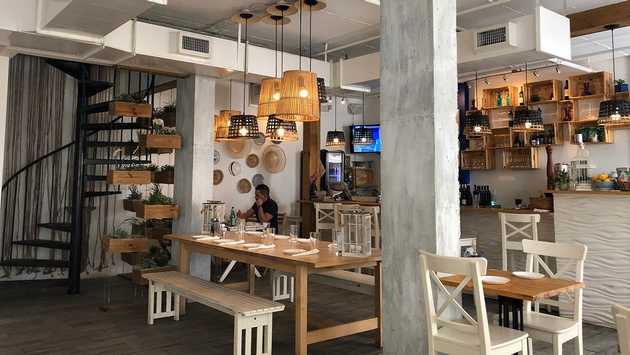
Think of South Florida cuisine and you’re likely to imagine seafood or maybe some Latin-tinged delights. But in less than two days in the Miami-Fort Lauderdale area, we were able to sample an eclectic variety of international restaurants with distinct cuisines and vibes. Following are four highlights.
Greek
I was a little surprised to find an authentic Greek restaurant in the midst of downtown Miami, steps from some of the city’s tallest buildings. But once seated at Meraki Greek Bistro, I was even more surprised that I was still in the heart of a major U.S. city.
Set back from the street and opening onto an interior courtyard, Meraki is a true joy. The restaurant feels like it’s located in an old European village, sheltered from the nearby high rises.
The courtyard is delightful with a mixture of sun and shade and is shared with a few other businesses, including a Brazilian restaurant and a dessert place. We sat inside at a protected table for two, in a small bay with white curtains adorning it. We had a great view of the courtyard and of the traditionally decorated interior of the restaurant. The effect was romantic and relaxing.
The food here is fresh, inexpensive and tasty. The hummus—topped with just a hint of paprika—was excellent, as was the Dakos salad—a sort of Greek bruschetta with marinated bread crusts topped with feta, tomatoes, olive oil and oregano. The chicken platters are also good choices, with the bacon-wrapped chicken platter being one of the standouts.
Don’t forget dessert. We were served a Greek delicacy with shredded phyllo dough on the bottom, a cheesecake-like middle layer and a creamy top with cinnamon. It was delicious and light enough that we didn’t feel over-stuffed.
Cuban
Padrino Cuban Cuisine in Fort Lauderdale is one of five Florida locations for this well-appointed Cuban chain. Now being operated by the third generation of Padrinos, the restaurant features a wonderful lunch buffet, ideal for newcomers to Cuban cuisine, as there was a nice selection of meat dishes, rice, soup and sweets. We enjoyed the black bean soup and the fried plantains, and both the chicken and pork were tender and perfectly seasoned.
Padrino also has a nice selection of salads and seafood, from mahi-mahi to shrimp creole, as well as a delicious paella—which features chorizo sausage along with fish, mussels, shrimp and scallops. If you’re in the mood to drink, the restaurant has a gorgeous bar and offers bottomless bloody Marys or mimosas as part of its brunch menu.
French
Le Patio has to be one of the most adorable, smallest restaurants I’ve ever been to. Tucked into a residential neighborhood in Wilton Manors, a suburb on the north side of Fort Lauderdale, it’s a very LGBTQ-friendly place. The owners, Vero and Jean, a lovely lesbian couple, cook and serve a mouth-watering array of French food on the cozy covered back patio. The diver scallops and lobster ravioli were excellent, as was the baked brie appetizer.
The ladies will gladly recommend a wine to accompany your meal, and they chose a lovely Merlot for our dinner. The small inside is covered in memorabilia and a strange (but delightful to our party) array of photos of hunky shirtless men. Make sure to book reservations in advance; the restaurant seats about 20, and word of mouth has made this a popular spot in the decade it has been open.
Italian
Carpaccio is located in the high-end Bal Harbour Shops and serves traditional and consistently excellent Italian fare. The restaurant has been open for 15 years, and regularly attracts politicians, sports stars, socialites and celebrities.
One of the great things about Carpaccio is that it’s like two locations in one. Eat inside, and the feel is white-glove, high-end restaurant softly lit with white walls and molding and black accents that really pop. It’s romantic and classical in vibe.
Or eat outside on the covered patio, where it’s loud and playful as wait staff hustle between the tables. Although it faces the Bal Harbour Shops’ parking lot, a strip of landscaping nicely mutes any distractions.
Tops on the menu might be the lovely pollo piccata, with succulent chicken breasts, thinly sliced potatoes and broccoli with sautéed spinach. There is also a nice selection of pizzas, salads, the requisite pasta dishes and some interesting risottos. Try the tasty ricotta cheesecake, which boasts a nice firm texture, and is topped with an amazing whipped cream.
Celebrity Cruises adds more Ben Fogle excursions
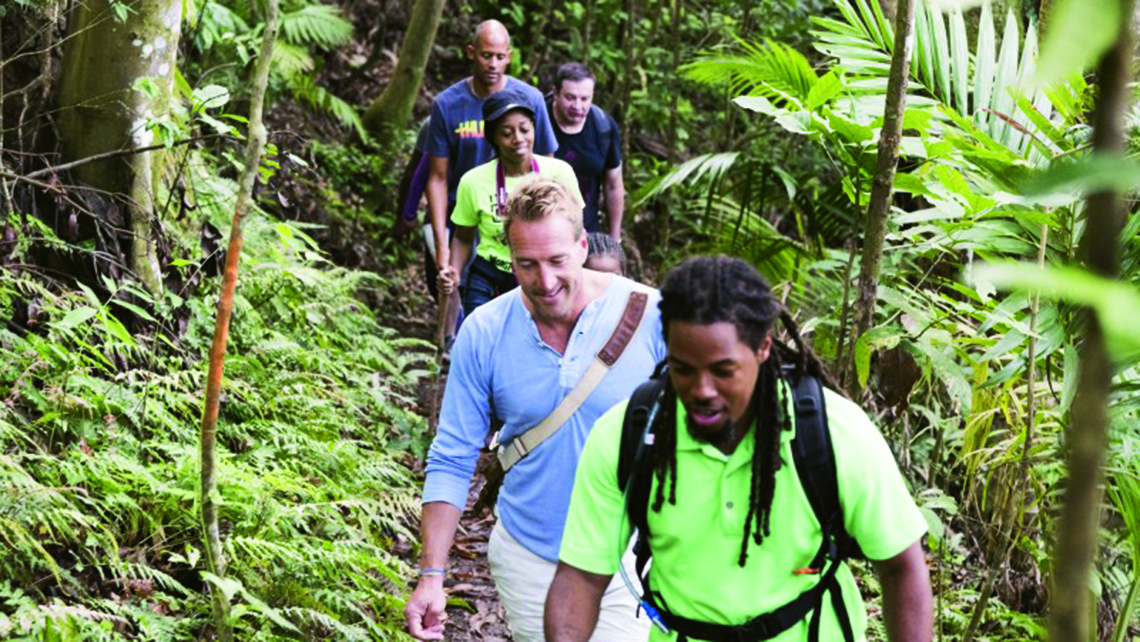
Celebrity Cruises has added to its stable of shore excursions designed in collaboration with British TV personality and adventurer Ben Fogle.
The expansion bumps the number of tours in the Ben Fogle’s Great Adventures program from nine to 20, and for the first time offers them outside Europe.
Recently appointed Celebrity Cruises’ global destination ambassador, Fogle has designed new excursions for the Caribbean and Alaska, as well as new additions in Europe.
Fogle’s global travels, including rowing with a partner across the Atlantic in a small boat, have been the inspiration the program.
The excursions include joining an ocean yacht racing team in Antigua, climbing to the rim of a dormant volcano in St. Kitts and a wildlife-spotting kayak excursion at Icy Strait Point in Alaska.
Virgin Atlantic unbundles economy fares
Virgin Atlantic will offer three categories of economy ticket as it embraces the trend of unbundling fares in a competitive transatlantic environment.
“Economy Light”, “Economy Classic” and “Economy Delight” will give passengers options from a basic, hand-luggage-only option, through to a fare including seat choice, pre-ordered meals, priority boarding and three inches of extra legroom.
Economy Classic will be in line with Virgin Atlantic’s current economy offering.
Premium Economy will simply become “Premium” as part of the changes.
Asked whether the move risks Virgin Atlantic‘s reputation as a premium brand versus low-cost long-haul carriers such as Norwegian, chief executive Craig Kreeger says: “We do not believe we are devaluing the experience. They are still going to have a Virgin Atlantic experience.
The Off Season, “In” Jungle Getaway

By Stephen Chrisanthus
You wake up in the morning and you are already over the day you haven’t even had yet. You think about the places you’ll go, the things you’ll do, the people you’ll see, and none of it sounds fresh. You just want to crawl back under the covers and dream of unfamiliar lands. When you need a change of everything familiar, head to the jungle! I’m not saying leave it all behind and go Tarzan. I’m saying a short exotic excursion to completely foreign surroundings to reset your mindset, a little break from the routine…with some monkeys and waterfalls in it.
Manuel Antonio, Costa Rica is an amazing jungle getaway you can do in the off-season inexpensively, for just as much fun as the in-season. It’s always a little rainy all year anyway so why not save on airfare, hotels, food and activities by going around October. The rain comes in short waves and the sun comes back out. Get big discounts for just a few more showers. I promise getting a little wet won’t ruin your time at all. It’s the jungle, it’s always a little damp, but sloths hang out year-round!
Just a few hours by car or bus, or a 20-minute plane ride from San Jose lays Manuel Antonio. Easy to get to, but secluded from the world, this jungle gem is the perfect escape for wilderness and animal life far from the makings of man. The city is a tropical paradise of outdoor adventure, restaurants, beaches and culture.
But just because you’re in the outskirts of nature doesn’t mean you have to live like an animal. How do you feel about 5 stars in the jungle? That’s what you get at the Gaia Hotel & Reserve. This amazing property perched atop a hill has all the luxuries of a top resort in Paris with the privacy of a remote bed and breakfast. You’re more likely to be disturbed by the sounds of a toucan than a noisy neighbor, and more likely to catch the stare or chatter of a cute local monkey than a nosey nuisance. Their La Luna restaurant is one of the very best in town and the views are breathtaking. The included a la carte breakfast there is also excellent.
After a long day of hiking or surfing take a visit to their first class spa for one of their rejuvenating massages. While most spas have to play relaxing nature soundtracks, you can fade into bliss to the real life sounds of the nature reserve just outside. The suites are also impressive. Offering various sizes and layouts, all are spacious and include high-end amenities. You could spend a whole day just ordering room service and sitting on the balcony taking in the overwhelming views. When it comes to service, long time owner Boris Marchegiani delivers, with an attentive and enjoyable staff. They really make you feel like you are staying with them at their exclusive, tropical paradise home. Quick to take you to the restaurant by golf cart or get you extra pillows, they attend to your every need, and by the time you leave will feel like new friends. All this for a fraction of the price it would run you during their busy season.
If you’re able to tear yourself away from the resort for some outdoor activities there are two I definitely recommend. No better way to get an overview of your jungle wonderland than from the very top. Soar through the treetops on the El Santuario Canopy Adventure. This exhilarating zip line tour takes you over the jungle through a variety of zip lines, culminating in the longest zip line in Central America and the 4th longest in the world. It even offers duel lines so you can race your friends. The views are amazing and the experience is one not to be missed. There system is very safe and the guides are extremely helpful so book this one, with a seasonal discount, for sure.
If you really want see what lies out there below the canopies take the Rainmaker Tour from Jade Tours. This hiking tour takes you up a mountain only recently explored by man, to see nature at its most untouched. You will make your way up and over jungle terrain through a series of hanging bridges and waterfalls assisted by a guide. Bath in the falls and take in the sights. The animals you come across would make a national geographic host jealous.
If you decide to step out for dinner in the evening why not head to another of the city’s best restaurants for food and ambiance, the only beachfront Resort Restaurant in Manuel Antonio, Arenas Del Mar. As you make your way through the resort you weave through wildlife until you hit the stunning beach and restaurant. The menu is all local and organic so you get a real taste of Costa Rica. The fresh fish selection is fantastic and they even offer the delicious and often hard to find snook. Enjoy the sunset over the water while enjoying friendly service and a meal you are sure to remember.
With so many destinations offering similar experiences and sights, this is a refreshing alternative. It’s such a change of scenery for most people that you really come back feeling like you were on vacation. There is so much to do there for anyone, whether you like to take on the thrill of outdoor adventure, or just marvel at it from the balcony of your suite. Next time you see “rainy season” don’t shy away, schedule off. The locals will be happy to see you and their gratitude will be reflected in the kindness to your wallet.
The great Italian truffle hunt

In the heart of Piedmont is where you will find them come fall: the greatest, some say, white truffles on earth. Everything is vaguely mysterious and rather secretive about a white-truffle expedition. You’ll keep hearing this, as I did, should you try to organize a night truffle hunt in the Langhe region, in the heart of Piedmont two hours south of Milan. It’s the best place in the world to produce the underground, naturally grown, extremely hard-to-find tartufo bianco, the exquisite, powerfully scented, and, yes, supposedly aphrodisiac white truffle, reports .
 It was also made clear to me that the truffle hound is key to any successful hunt, even more important than its partner in crime, the trifulau, the handler and usually the owner of the dog. And I was warned not to get my hopes up: A demonstration was easy to set up, but joining a mission, to experience the real thing—a three- to four-hour walk in the woods with the dog and its master—was close to impossible.
It was also made clear to me that the truffle hound is key to any successful hunt, even more important than its partner in crime, the trifulau, the handler and usually the owner of the dog. And I was warned not to get my hopes up: A demonstration was easy to set up, but joining a mission, to experience the real thing—a three- to four-hour walk in the woods with the dog and its master—was close to impossible.
Finally, I found one: Piercarlo Vacchina, a master trifulau, agreed to take me along. For his day job, Vacchina manages his small company installing alarm systems and electrical gates. At night, he becomes one of 4,000 truffle hunters officially recognized and licensed to search. They lead the dog to specific locations, all belonging to other people, using a stick called a barot and a flashlight. They keep handy a small shovel should their retriever give a sign and a cloth to preserve the delicate find. They wander, sometimes all night, with their dog, always trying to mislead the competition by taking long detours from their final destination.
At that moment I saw the dog, Roky. First the piercing eyes, then his black head on his tight, midsize body, mostly white with a couple of black splashes. Roky was sitting still in the trunk of the station wagon, projecting pure energy and a great deal of anticipation. Like most truffle hounds, he was a mutt. A pointer, German hound, and Labrador mix.
“Let’s go and park at the cemetery,” Vacchina said. We drove about a mile in the mist, which was still orange, reflecting the light coming from the tall streetlamps along the way. We parked beside a tall, white wall. It was now much darker and a bit spooky. The streetlamps had vanished. Roky jumped out of the car and was kept on a leash. He was pushing toward the fields across the road from the cemetery, where we took a grassy path, Vacchina leading the way with a flashlight. The path disappeared into a large vineyard at the top of a hill, and we kept walking alongside rows of vines for a while. We could hear down the hill the noise of the Tanaro River growing stronger, rushing down from the nearby Ligurian Alps to become the major affluent of the Po, the longest river in Italy. Being November it was cold but not freezing. We kept a brisk pace along the vineyard until we reached a small valley. The landscape changed dramatically; tall trees were right in front of us, climbing up another hill. The fog was now long gone, and it was a moonless, starry night. The stage was set. The hunt for the elusive white truffle was about to begin: Vacchina took us into the woods and unleashed Roky, who sprinted ahead.
At eight years old, Roky is at the height of his career and will probably retire in a couple of years. “He is very strong, intelligent, and has all the qualities of the different breeds he is made of, which helps him a lot in his job,” said Vacchina, who got him when he was a three-month-old puppy. Almost immediately, Vacchina started to train him, a task that requires about three years for the dog to learn how to identify the prize.
Truffles, like mushrooms, are a type of fungus. A main difference is the truffle grows underground, feeding from the roots of a tree. Not just any tree but especially oak (durmast oak in particular), poplar, linden, willow, and hornbeam. And there are many different types of truffles: black, summer, Burgundy, and Périgord—all these are found in other Italian regions and other European countries. But the best, softest, tastiest is the white truffle. It is generally located about one foot underground, and only a dog with a great nose can identify it. “The dog needs to learn patience and concentration,” said Vacchina, who already has a new dog in training for when Roky retires. The way it’s done, he explained, is by hiding a very small truffle in the high grass. When the dog finds it, he gets a reward.
The education of a truffle dog is so central to the process that there is even a university for truffle dogs. It is the only one in the world and is in nearby Roddi, behind a castle on the top of yet another Langhe hill. It was established in 1880 by Antonio Monchiero, a master trifulau, and it has been a family affair for generations. The current dean is Giovanni Monchiero. When I visited, he greeted me at the door of the school, which, occupying a single room and a courtyard for much of the training, is also probably the smallest college in the world. The Monchieros receive a dog for training from the owner and after a couple of years they send it back fully trained.
Monchiero explained that there are two philosophies for keeping the dog focused while looking for a white truffle. The first is to treat the dog nicely, providing not only good food but also good care before and after any search. The other is to reward the dog with food only if he or she finds the truffle. Monchiero told me that he has heard of dogs whose trifulaus leave them with no food sometimes for up to five days if they don’t deliver. “It’s not bad for dogs—they can go days without eating—and, at the same time, it improves the chances of finding the truffle,” said a local who prefers to remain nameless and with whom most disagree.
The university seemed rather empty for a university, but Monchiero explained that most “students” were now out. He told me that a well-trained truffle dog could sell for around $5,000 and that he has heard of prices as high as $20,000. He also confirmed and expanded on all the stories and rumors I’d heard of infighting, jealousy, and unfair competition among the trifulaus.
While in Alba, I went to visit Ferrero, the largest food company in Italy, the maker of Nutella and the Tic Tac, among other world-famous candies. And it was here from his kingdom of Fontanafredda that Farinetti conceived Eataly, the worldwide, high-end food-chain sensation. Fontanafredda, in Serralunga d’Alba, was the hunting lodge of King Vittorio Emanuele II. The king, a man of earthly excesses and a wine and food lover, had a love child who inherited the place and transformed it into a major wine paradise. This helped to launch the modern age of wine production in the Piedmont region, which also included the brands of Gaja, Ceretto, Pio Cesare, and Giacomo Conterno (of the extraordinary Monfortino), which all produce wines that collectively challenge the traditional world-class superiority of the best French vintages.
All of this is to say that there are deep, ancient cultural roots behind the not-so-simple white-truffle hunt. And that the truffle finder, the dog, bears a great deal of responsibility. Last year at the International White Truffle Fair in Alba, held for a couple of weeks every year around October 1 to establish and discuss prices and sale commitments, the whole event was set to honor the truffle dog, and Roky went to be part of the celebrations.
Roky was now with us in the hills behind Barbaresco. Our group, led by him, kept walking. The dog was incredibly diligent: He trotted in circles, he stopped, he sniffed intently, he moved on. Then suddenly something in the dynamic of Roky’s sniffing and trotting changed. He stopped and then he rushed down, this time into a steep drop in the terrain. “There we are,” said Vacchina, excited. And from an impossible position, Roky stopped and started to furiously excavate the ground. Vacchina embraced Roky with his left arm, blocked him, and started to gently continue excavating with his small shovel. It all happened in a matter of seconds. Finally, the white truffle emerged and was visible in Vacchina’s hands, under the light of his flashlight. It was small, actually very, very small, the size of a hazelnut. It was not marketable, but that did not matter: “You win one, you lose one,” Vacchina said. He gave the small truffle to Clio as a trophy for a long night spent hunting in the woods, and with Roky still sniffing around, we started to head back, uphill, toward the vineyards.
Secrets Behind the White Truffle
It’s exceedingly difficult to farm a white truffle: The vast majority occur in nature. It’s found in great quantities of good quality in Italy’s Langhe region and in parts of Monferrato because of the same geological makeup of the soil that produces the grapes used for wine. Truffle season runs from October to December, with November considered to be best.
Trifulaus and their dogs prefer to go at night because the humidity is higher and that helps a truffle to grow and mature, sometimes in a couple of hours. But the dark is also better for privacy. Truffle hunters have their secluded paths, and they don’t want anybody else in on the secret. Often an entire night of work will bring no results, but their trade can be lucrative: A white truffle can sell for about $1,250 to $2,500 per pound. Giant white truffles of about 2.2 pounds are very rare and are sold at special auctions, often for hundreds of thousands of dollars; a record was set in 2010 for a large truffle that went for $417,200. For the home cook, New York–based Buon’Italia (75 9th Ave.; 212-633-9090; buonitalia.com) is the place to buy Alba’s white truffles in the United States.
To arrange a truffle hunt in the Langhe region, contact the area’s tourism office, Ente Turismo Alba Bra Langhe e Roero (39-173/35-833; langheroero.it). Or a tour operator such as Indagare (212-988-2611; indagare.com) can arrange a trip to Piedmont plus an outing with a dog.
The region’s hotels are mostly boutique or converted farmhouses. Rocche Costamagna (rooms from $155; Azienda Agricola e Cantina Via Vitorrio Emanuele 8, La Morra; 39-173/509-225; rocchecostamagna.it), located in La Morra, has a farmhouse adjoined by a winery dating to 1841. About ten minutes from Alba is Castello di Guarene (rooms from $395; Via Alessandro Roero 2, Guarene; 39-173/441-332; castellodiguarene.com), in an 18th-century castle with 12 rooms. Il Boscareto (rooms from $290; Via Roddino 21, Serralunga d’Alba; 39-173/613-036; ilboscaretoresort.it) is more modern. Built in 2009 in Barolo, the hotel has 38 rooms decorated in wine hues. Relais San Maurizio (rooms from $330; Via San Maurizio 39, Santo Stefano Belbo; 39-141/841-900; relaissanmaurizio.it) is 30 minutes east of Alba. The former monastery was restored as a 36-room hotel.
Good places to eat are everywhere. Michelin three-star Piazza Duomo (Piazza Risorgimento 4; 39-173/366-167; piazzaduomoalba.it), in Alba, serves a tasting menu in front of a fresco painted by Francesco Clemente, and the one-star Ristorante Il Centro (Via Umberto I 5; 39-173/616-112; ristoranteilcentro.com) is in Priocca, 20 minutes north of Alba. The menu has barely changed since the restaurant opened in the 1950s.
Singapore voted ‘world’s best airport’ for the sixth consecutive year
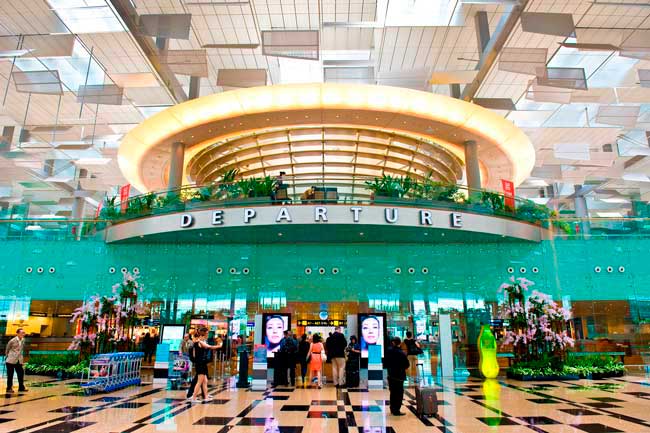
View of the departure hall at the newly built Changi airport.
Singapore Changi Airport has been named as the World’s Best Airport by air travelers for the sixth consecutive year at the 2018 Skytrax World Airport Awards, held at Passenger Terminal EXPO in Stockholm, Sweden. This is the ninth time the Singapore airport has won the top international title since 2000. The airport was also named the best for leisure amenities.
The airport was also named the best for leisure amenities. Changi Airport is very focused on making the airport experience comfortable and convenient and continues to innovate with new product and services features.
What makes it the best in the world? Perhaps it’s the rooftop pool with a jacuzzi or its multitude of gardens: orchid, butterfly, sunflower, cactus, water lily, and “enchanted,” just to name a few. Or perhaps it’s the movie theater, XBox 360 station, or kinetic art installation of 1,216 aluminum and copper raindrops. Then there’s the food—so much food! Dozens of gourmet restaurants, six expansive dining halls including one that specializes in Singaporean street food, and one Hello Kitty Orchid Garden Café. That is, if travelers even need to waste time eating. Luxury and trendy stores are all around, like Vuitton, Saint Laurent, Hermès, and not one, but three different Adidas shops.
And it doesn’t look like Changi will relinquish its crown anytime soon. According to Bloomberg, it’s working on adding a fifth terminal as well as a “shopping-and-dining facility called the Jewel as passengers increase.”
The World’s Top 10 Airports
1 Singapore Changi
2 Seoul Incheon
3 Tokyo Haneda
4 Hong Kong
5 Doha Hamad
6 Munich
7 Nagoya Chubu Centrair
8 London Heathrow
9 Zurich
10 Frankfurt
Last year’s second-placed Haneda International Airport in Tokyo dropped a rank, swapping positions with Seoul’s Incheon International Airport. Hong Kong moved up a spot to fourth, while Munich Airport dropped two spots to sixth. Doha’s Hamad International Airport rounded out 2018’s top five.
Asia and Europe and well represented, but not a single North American airport or terminal is listed in the top ten. The best American airport is Denver, which came in at number 29. Yes, that means that the U.S. didn’t even crack the top 25—which is unsurprising to anyone who has ever set foot in an American airport mainly focused on practicality rather than the passenger experience.
The World’s Best Airport Terminals
1 London Heathrow – T2
2 Munich – T2
3 Singapore Changi – T3
4 London Heathrow – T5
5 Tokyo Haneda – Int’l
6 Madrid – T4
7 Dubai – T3
8 Paris CDG – T2-M
9 Mumbai – T2
10 Baku Heydar Aliyev Airport – T1
“To be voted the World’s Best Airport for the sixth consecutive year is a fabulous achievement for Changi Airport, and this award yet again demonstrates the airport’s popularity with international air travelers,” Edward Plaisted, CEO of Skytrax, said in a statement accompanying the rankings.
The 2018 iteration of the annual World Airport Awards from research group Skytrax was based on 13.73 million survey questionnaires across more than 500 airports worldwide, taking place from August 2017 to February 2018, the firm said.
New ways airlines are trying to improve the flight experience
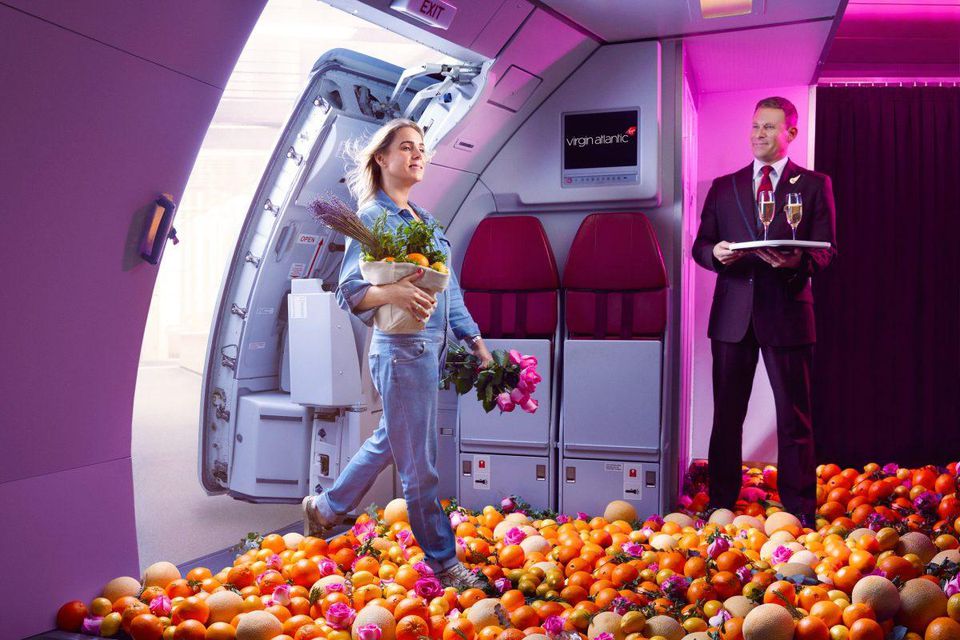
Airlines across the globe are introducing new ways to improve the flight experience, from better lounges, seats, healthier food and drinks, inflight entertainment upgrades, video on-demand, to wellness videos to reduce jet lag. Are these changes cosmetic or are they for real?
Today passengers have more choice and less patience than ever before, and they are increasingly eager to share their travel experiences with the world after a trip. Each traveler has become a well informed influencer to whom airlines have to pay attention. Only the airlines who grasp this very important fact will be successful at providing that they promise, the others will be providing public transportation just you local school bus or subway.
This trend means it is essential for airlines to focus on personalization and engagement with passengers at all points throughout their journey, says Bruce Randall, global director of travel at e-commerce software firm SAP Hybris.
Airlines can no longer assume that their websites will be the first place passengers visit when researching travel options, and they must accept the growing trend for customers to take to social media post-trip, to make their travel experiences – both good and bad – public knowledge.
To make travelers happy, the airline needs to engage with them at every step of the journey – before and after their first trip. Should airlines care at all about the experience their passengers had at their hotel or on any excursions they went on? Absolutely, whatever experiences they’ve had with the airline may reflect on whether or not they come back.
Randall suggests airlines should be using “social outlets” to “track and ascertain” whether passengers had a good trip with them, and to follow up on what they learn. “As an airline I can check in and say, ‘how did the trip meet your expectations’? And I can pull data to find out, what are they posting? What are they saying about it?” he adds.
A New Inflight Experience
Two weeks ago, on a Virgin Atlantic flight from Manchester to New York, there was something different in the air. If you inhaled as you boarded the plane, you might have detected a touch of citrus along with rose, eucalyptus and perhaps just a touch of lavender. It was the debut of London fragrance expert Rachel Vosper’s new plane scent.
From now on, across the 43-strong fleet, as passengers get on on their plane, they will be greeted by the smell of Air. Exclusive to the airline, a candle version of the scent will also be available to buy.
For Daniel Kerzner, VP Customer Experience at Virgin Atlantic, who joined the company from the Starwood hotel group, it’s the start of a project that aims to set Virgin Atlantic apart from other airlines:
“When we’re looking for inspiration, we don’t look to other airlines, we take cues from hospitality, retail, restaurants and bars and from the entertainment industry. We want our customers to forget they’re on a plane 35,000 feet in the air and immerse themselves in the unique Virgin Atlantic experience.”
Wellbeing in the air is the newest battleground of the long-haul airline. On the other side of the world, Qantas—which is introducing a 17-hour non-stop flight from London to Perth this month—has teamed up with the Charles Perkins Centre at the University of Sydney to introduce a series of new initiatives. The start of the roll-out is timed to tie in with the airline’s introduction of Dreamliner flights in March 2018.
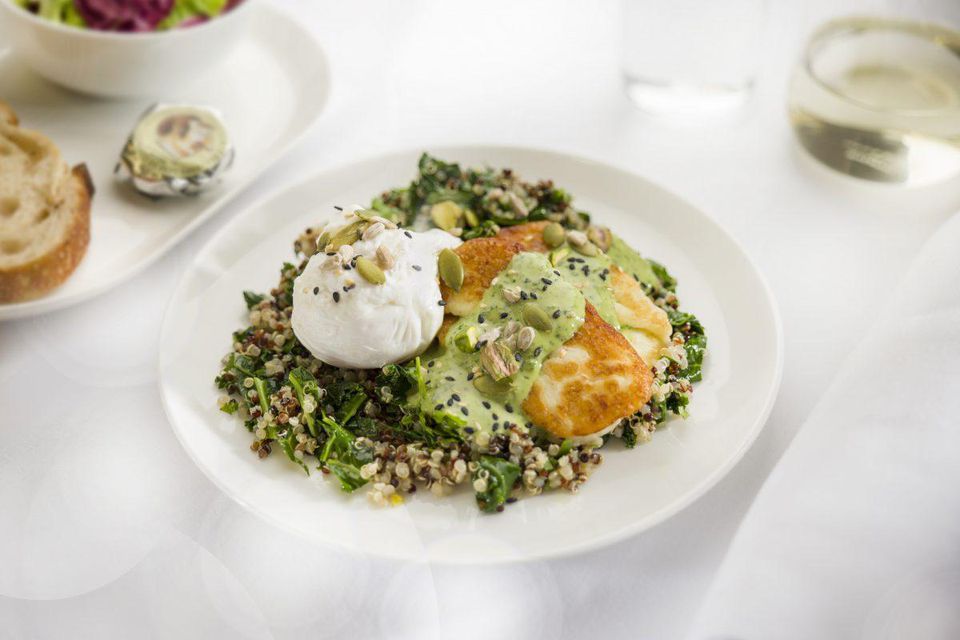
Says Alan Joyce, CEO of Qantas, “While the Dreamliner aircraft itself is already a step change for passengers with its larger windows, increased cabin humidity and lower cabin altitude, the findings that will come from Charles Perkins Centre researchers will allow Qantas to design and develop a range of new innovations and strategies to complement the Dreamliner experience.
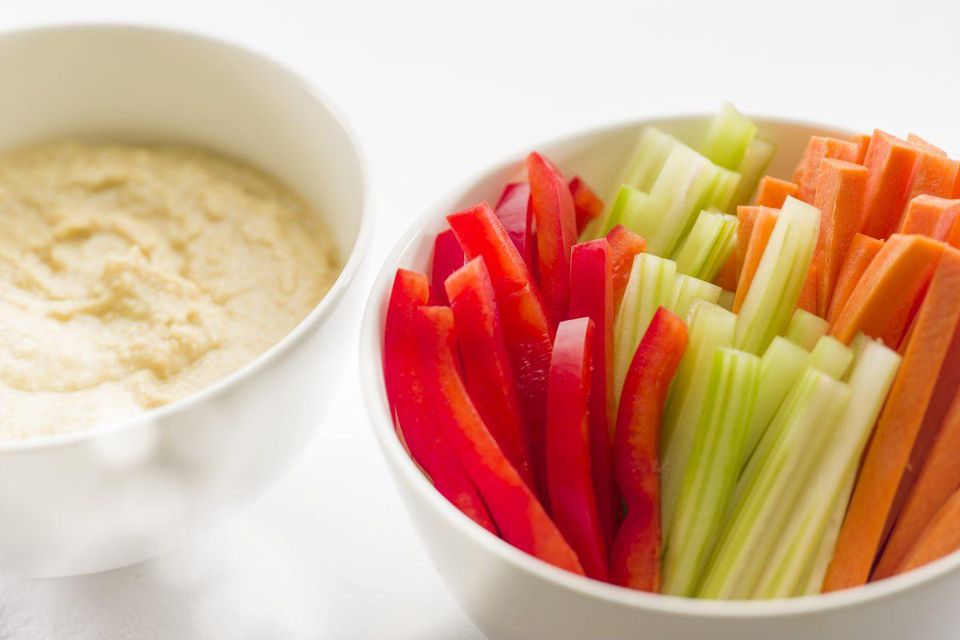
“By taking a holistic view of our customers, our partnership will examine everything from reducing the impact of jet lag through to health, nutrition and sleep through the entire journey experience,” he adds.
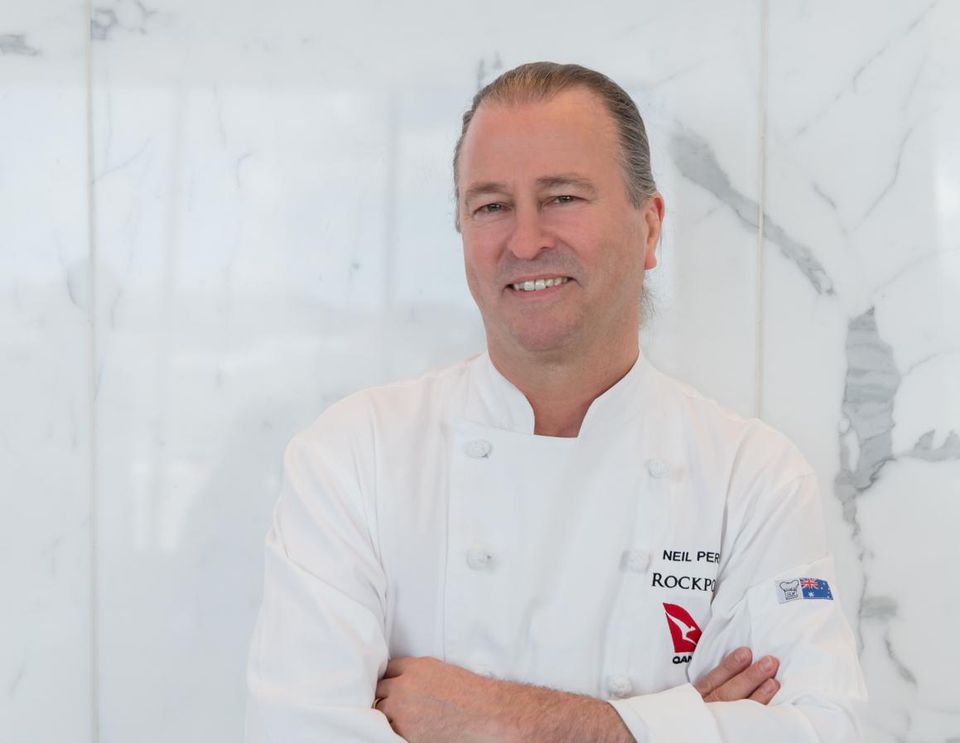
First off the blocks is a new menu, devised by Qantas consulting chef Neil Perry to include probiotic drinks and cold-pressed juices. Menu options for business passengers will include tuna poke salad and crudites. In premium and economy, passengers are likely to see dishes such as marinated beef, cumin and zucchini salad and roast chicken with red rice and mediterranean vegetables rather than cream-soaked, carb-rich processed meals. All cabins will have fruit plates; in business and premium there will be a specially blended Qantas tisane that aims to enhance sleep.
Emirates said it will introduce a new Airbus A380 cabin interior upon receiving new aircraft in 2020. The Gulf carrier’s president Tim Clark promised a “transformation of the cabin” with these widebodies, to include new lighting, bathrooms and spas. Emirates will not introduce its new, fully enclosed first-class cabin on the A380 until 2021, however. That cabin was unveiled last year and has been installed on the airline’s latest Boeing 777s.
Clark says the first-class suite’s installation is “really difficult” and requires extensive certification efforts, which is why the equipment will not be ready when deliveries of the new A380s begin in 2020.
“Two or three” 777-300ERs have been delivered with the new configuration and are being deployed on routes to Brussels and Geneva. Both cities are served twice daily from Dubai, but with the current fleet it is possible to offer the new configuration on only half of the flights. The suites will also be installed on on-order 777X and 787 twinjets, Clark confirms. He says the airline’s 787-10s will “mainly” be configured with the first-class cabins.

New Inflight Entertainment
Cathay Pacific has introduced inflight yoga and meditation sessions. Split into six sessions, the series aims to demonstrate yoga and meditation routines that can be done before, during or after a flight. Exercises are designed to improve circulation, enhance joint mobility and relax the mind for a comfortable and restful journey.
For airlines that want to offer passengers video on demand to watch on their personal devices Wifi Technologies believes it has the answer. The Belgian company launched its Wifi Air TV product using a “very powerful wi-fi router” to stream pre-loaded content to passengers’ devices, and has a “huge memory” that can store up to 40,000 movies and TV shows, says president Yves Hendrickx.
Air New Zealand has developed an interactive online experience allowing travelers to explore New Zealand using emojis. Users will be asked to comment on Air New Zealand #EmojiJourney Facebook or Twitter posts with a combination of emojis which would best describe their perfect New Zealand gateway. This will then automatically generate a link to a personalised map of New Zealand for them, with emojis highlighting points likely to be of interest.
Clicking on each of the emojis on the personalised map will provide more information about destinations and activities on offer, such as food and beverage hot spots, shopping, art and culture, adventure pursuits and things to do in the outdoors.
New Lounge Experience
Carriers around the world, including the three largest U.S. ones, have been developing and opening new airport lounges, including specialized products for the highest level of premium travelers.
While-premium class seats are major passenger revenue drivers for airlines, lounges are more of a cost center, tools to attract premium travelers. Increasingly, airlines are realizing the importance of a consistent experience from the airport to the plane, he said.
American Airlines, for example, has opened four of its new Flagship Lounges — in Miami, Los Angeles, Chicago and New York’s John F. Kennedy International — and more are on the way in Dallas, Philadelphia and London.
The lounges include expanded seating, shower suites and such food and beverage amenities as a specialty cocktail bar and premium wines. Most of the lounges also provide a sit-down dining area for Flagship first-class passengers.
Over the past 18 months, Delta has opened flagship clubs in Atlanta and Seattle and Asanda Spa Lounges in Seattle, JFK and Atlanta. The carrier also has renovated its clubs in Newark and Minneapolis and expanded its club at Raleigh-Durham International.
Across many of its lounges, Delta has been expanding food and beverage options, including bars with craft beers, seasonal cocktails and sommelier-selected wines at about 20 locations.
United Airlines last year opened lounges in San Francisco and finished renovation and expansion of two in its Houston hub. The carrier has delayed the openings of some of its Polaris lounges –only Chicago is open — but expects to open them in San Francisco, Newark, Houston and Los Angeles this year. Washington Dulles, London Heathrow, Tokyo Narita and Hong Kong will follow.
How to survive super long non-stop flights

The traveler who sets off from New York or London with the intent on flying around the world can do so in three hops. In the late 1980s, upgraded engines allowed Jumbo jets to reach Tokyo non-stop. From the Japanese capital, trans-Pacific flights opened up to Vancouver, San Francisco and Los Angeles. From any of these, you could make a final leap back to London or New York.
Since Feb, 5 2017, the longest non-stop scheduled airline flight by great circle distance is Qatar Airways Flight 921/920 between Auckland, New Zealand and Doha, Qatar at 14,535 kilometres (7,848 nmi; 9,032 mi). The flights use a very long-range Boeing 777-200LR. QR 921 from Auckland to Doha is also the longest flight in duration, taking 18 hours and 20 minutes.
Qantas began the first UK-Australia scheduled non-stop Boeing 787 service on Mar. 25, 2018, with a special jetlag reducing menu. The flight will take just 17 hours from Perth non-stop.
Later this year these new very long flights will be introduced:
- On September 1 2018, Qantas will launch nonstop flights between Melbourne and San Francisco using Boeing 787-9 aircraft. The flight will cover 12,641 kilometres (6,826 nmi; 7,855 mi) and last roughly 15 hours.
- On September 15 2018, Cathay Pacific will begin nonstop flights between Hong Kong and Washington—Dulles using Airbus A350-1000 aircraft. The flight will cover 13,122 kilometres (7,085 nmi; 8,154 mi) and last about 16 hours.
- On October 28 2018 Philippine Airlines will launch nonstop flights between Manila and New York using Boeing 777-300ER aircraft (could change to an Airbus A350-900). The flight will cover 13,712 kilometres (7,404 nmi; 8,520 mi) and last 15 hours and 30 minutes.
- On November 30 2018, Air New Zealand will begin nonstop flights between Chicago—O’Hare and Auckland using Boeing 787-9 aircraft. The flight will cover 13,171 kilometres (7,112 nmi; 8,184 mi) and last about 16 hours.

My Survival Guide to Very Long Flights
Hearing a recent discussion with fellow frequent flyers concerning the world’s longest flights made me remember my first true long-haul flight to Hong Kong from New York. About six hours into the 15-hour flight, I was feeling strong and confident. I clearly remember thinking, “Six hours down, nine to go. No sweat.”
But get there I did. Unfortunately, that meant I had to get back as well, a flight on which I made a serious tactical error, which led to misery for me and entertainment for my friends on the flight—about which I will tell more in due course.
However, not all long-haul flights have to be miserable; on one direct flight from New York to Honolulu or Zurich to Miami took once 11+ hours! I was nearing the end of a book I was enjoying immensely, and remember distinctly thinking, “No, no, just a little more time!” when the pilot told us over the in-flight PA that we had started our final descent. Here are 10 tips for preventing boredom, dehydration, deep-vein thrombosis, sleep deprivation and more so you can confidently say “I got this” the next time you are imprisoned in a metal tube for an entire waking day of your life.
Use Airline Seat Maps or SeatGuru
On the flight back from Hong Kong mentioned above, I called ahead to get my seat reassigned to an exit row—big mistake. Unbeknownst to me, the exit row seat I chose was a window seat at one of the big, thick exit doors, which encroached on my leg area such that I had to sit sideways in the seat for the entire flight. It was also more like an “exit aisle,” located right at a restroom, so there was endless and noisy foot traffic the entire flight. I was lucky that the rest of the row was empty, but it wasn’t much help; the armrests did not go up, so I couldn’t lie across the three seats in the aisle.
Needless to say, mine would have been a “yellow” or even “red” seat on the SeatGuru seating chart if it had existed in 2000 (the site was launched the following year). Eventually I went around the aircraft collecting all the unused pillows and blankets I could find, piled them up in each of the three seats, and created a workable (but in truth not very comfortable) platform across all three seats—and got a very few winks of sleep during the flight. I guess it was fairly comical, as friends all took pictures of me during the flight for their amusement. Glad you had a fun flight, guys.
Before you choose, think hard about your usual preference of exit vs. aisle seat; it may be different on a long-haul flight than on a shorter flight. If you usually choose an aisle seat, consider whether you want your long, Ambien-enhanced sleep to be interrupted by an aisle mate; similarly, if you usually choose a window, you could get trapped in there by a snoring person in a prescription drug-induced stupor. To learn more, see Get the Best Airplane Seat.
Upgrade
When traveling long-haul, you have no better friend on the planet than your frequent flier miles. On the Hong Kong – Newark flight I was disappointed to see come to an end, I enlisted the help of my travel agent to find flights on which I could burn up all of my United miles to upgrade my entire trip. It meant catching puddle jumpers to my final destination Singapore, but a couple of short extra flights were a small price to pay for 27 hours of first-class legroom, fully reclining chairs, edible meals, entertainment and breathing space.
If you stop reading at this point in the article, you almost need to know nothing more than this—by hook or crook, try to get an upgrade. (Even Dr. Timothy Hosea, from whom you will hear below, offered this as his first and most important suggestion.)
Ask About Seats at the Gate
Failing the ability to choose great seats before your flight, try again at the gate. If the flight is not full, the gate agent may be able to see an empty row, or put you and a traveling partner in a “window and aisle” configuration that reduces the likelihood of having someone sit in the middle seat, thereby getting you a seat and a half, at least.
Don’t Carry on Too Much Stuff
While checked baggage fees are inspiring travelers to carry on more and more stuff, on a long-haul flight this could burn you; anything that is under the seat in front of you just means less legroom and a more cramped living space for 15 or 16 hours. Don’t bring so much on that you compete for your own sleeping space.
Bring Your Go-to Gear
When it comes to surviving flights, I am not a gear guy. I can’t be bothered to lug around neck pillows, eye masks, earplugs, noise-canceling headphones, etc.—except on a long-haul flight. As I note above, your total carry-on haul should be limited, but you may want to consider some of these relatively small survival tools. Your body and brain will thank you for every small comfort you can provide, and the inconvenience of packing and carrying these around is dwarfed by the misery of 15 hours in flight with crying children, pilot announcements, engine noise and a major crick in your neck. Gear up.
Secure Your Stuff
A long-haul flight gives unscrupulous travelers plenty of time to size up the location of your wallet, wait until you fall asleep and make a move on your luggage. Secure your valuables deep inside your bags where it would take a TSA X-ray machine to find them. Consider keeping items like your passport, credit cards and cash in a money belt under your clothes.
Board Relatively Rested
Don’t count on a long-haul flight as a good place to catch up on sleep—it’s not. As attractive and intuitive as it seems to get on a long-haul flight extremely tired, hoping to sleep the whole way, you are in for a world of hurt if you can’t sleep for any reason. You will be on the plane long enough to catch a few winks even if you are somewhat rested, and my advice is to take it when it comes; if your eyes start to droop, get out the eye covers and earplugs, and go with it. If you throw away a solid two-hour nap on a few extra rounds of Angry Birds, you might be angry at yourself later.
Consider a Sleep Aid
If you are planning to use sleep aids (including “natural” methods such as melatonin, or prescription drugs such as Ambien), try them before you fly with them. A few years ago a friend gave me an Ambien pill for a red-eye flight from Honolulu to New York City, and the drug acted more like a stimulant than a sleep aid. I was awake the entire flight and felt wretched to boot. These drugs can vary greatly in how they affect individuals, so you will want to try them at home before you rely on them on the plane.
Dr. Timothy Hosea, team physician and Chair of the Sports Medicine and Research Committee for the United States national rowing teams, sometimes prescribes sleep aids for his athletes, but notes, “If you feel you need a sleep aid but haven’t used those drugs before, you should probably try taking Tylenol PM or Benadryl. A prescription is fine with your doctor’s approval, but don’t experiment on a long flight; [the plane won’t] stop for you!”
Dr. Hosea also says that, as the team doctor, he does not take any medication while flying with the squad in case someone needs care. “I bring a book, watch the movies and try to let the flight pass,” he says. His approach is appropriate for other travelers who need to have their wits about them, such as folks flying with children, for example. If someone could potentially need you to be 100 percent during the flight, you should forgo any sleep medication. For more advice, see Sleeping on Planes.
Take Care of Your Health
Hydration: If you think hydration is a concern on a cross-country flight, try tripling or quadrupling your time in the air; you might as well spend 15 hours lying on the desert floor. Imagine you are going to walk from Flagstaff to Winona, Arizona. How much water would you bring? Try to drink about that much on a 16-hour flight.
Dr. Hosea recommends drinking “electrolyte solutions, Gatorade being the best known, instead of solely water.” Hosea says that maintaining electrolyte balance is important, and that you don’t want to become completely diluted with water, particularly for older folks or people with other medical problems.
Deep vein thrombosis: DVT, the formation of blood clots in deep veins, is a known (if occasionally overstated) risk on longer flights. According to the National Institutes of Health, the risk of developing DVT increases when flights go longer than four hours. The NIH’s tips include walking up and down the aisles of the plane; moving, flexing and stretching your legs to encourage blood flow, especially in your calves; wearing loose and comfortable clothing; drinking plenty of fluids; and avoiding alcohol. Also, if you’re at increased risk for DVT, your doctor may recommend wearing compression stockings while traveling or taking a blood-thinning medicine before you fly.
Dr. Hosea notes that the combination of being immobile along with the effects of dehydration increases the risk of DVT on long flights. He strongly recommends the following during long trips:
- Hydrate well the night before the flight, preferably with electrolyte drinks.
- Don’t drink alcohol the night before the flight.
- Avoid diuretics such as coffee, soft drinks and even chocolate (all of which contain caffeine).
- If you have no issue with ulcers, take a baby aspirin the night before and day of your flight.
- Get an aisle seat or exit row so you can get up and walk around whenever possible.
Susan Francia, an Olympic gold medalist in rowing, has taken to wearing compression socks on long flights to competitions, although she has stopped short of wearing a full body suit. (Hosea discounts the need for the body suit as well: “You are really worried only about your ankles and calves.”) Francia has noticed a positive effect from the compression socks, which Hosea notes can be simple “support hose.”
Colds, the flu, bacteria, etc.: As I wrote in Avoiding the Airplane Cold, it isn’t “air quality” that is of concern when you are flying, or recycled air, or anything of the sort—it is your body’s compromised ability to deal with normal bacteria and viruses that puts you in danger of getting sick after a flight.
That is not to say that the general environment on a plane doesn’t add to your risk of getting sick. Recent studies have found that the water coming out of aircraft sink faucets is often rife with bacteria from sitting in murky holding bins; that the seats, pillows and blankets on planes are more germ-ridden than your laundry basket; that your tray table is probably dirtier than your own bathroom floor; and that the seatback pockets—well, you don’t even want to know, apparently.
Francia recalls a flight on the way to the Rowing World Championships last year where she considered wearing a face mask; the entire U.S. rowing team had contracted the swine flu on a World Cup trip earlier that summer, and she was being cautious. Francia asked a flight attendant what she thought. “Good idea, but it won’t help,” was the verdict. There is just too much stuff all around you to win that war. In the end, your best strategy is to bring along some bacteria-killing wipes, clean up your seat area as best you can and relax; there’s not much more you can do.
Escape
You will want to have a rock-solid plan for frittering away several hours of your flight, and I don’t mean working; staring at spreadsheets and writing proposals may burn up hours, but it does not make them vanish. You want these hours to disappear almost without a trace. Think headphones and Hollywood blockbusters. Getting a lot of work done is fine—rarely do you have 15 consecutive hours without a phone or email, so I encourage bringing some work—but work will fail you when you get to the brutal middle hours of this ordeal. Headphones and Hollywood; don’t stray from this.
Spring for the airline’s headphones, pay for and watch every movie, swipe your card for the inflight entertainment system or DIRECTV, bring your iPad crammed with your favorite flicks—whatever it takes. See also our list of the best airplane books; these page-turners can definitely kill a few hours.
Let’s face it: electrolytes, books, ebooks, movie after movie, and aspirin don’t change the fact that you are stuck inside a metal can for a whole day. Just keep reminding yourself that this too shall pass—although I recommend saving your “I got this” until the wheels touch the ground.
Nara, Japan
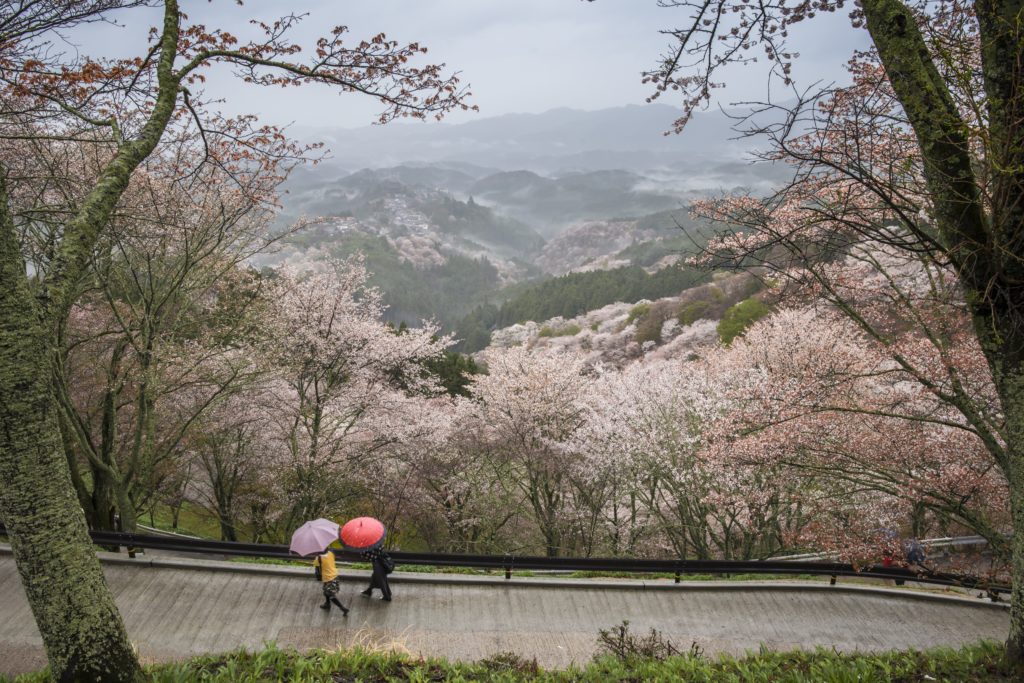
Less than an hour south of the famed Japanese city of Kyoto is the comparatively small, but no less brilliant city of Nara. Much like its neighbor, Nara was once a major capital of the region and is now recognized as a UNESCO World Heritage Site. It’s a city full of Shinto shrines, gardens, parks and Buddhist temples that offer a rich glimpse into the mysterious, beautiful world of ancient Japan.
The splendor of Nara is immediate. A short walk from the train station looms a towering, 5-tier pagoda called Kofuku-ji. It’s one of the Seven Great Temples known to city and is widely considered a most exquisite example of ancient Japanese wooden architecture.
Around the corner is the Todai-ji temple. Visitors are welcomed into a massive courtyard before the even more colossal structure of the main temple. Inside is the one of the world’s largest indoor Buddha statues, the Daibutsu. Also known as the great or giant Buddhas, the Daibutsu are universally impressive for their scale. The bronze Daibutsu of the Todai-ji temple is almost fifty feet tall and sits atop an enormous lotus flower with a gilded depiction of sacred Buddhist incarnations as a backdrop.
But what makes Nara truly unique are the city’s very unusual ambassadors: thousands of semi-wild deer that roam the city limits and whose auburn fur and white dots bear resemblance to the most famous-of-all animated doe. Considered sacred, the deer have an important presence throughout Nara. They’ve been milling around with locals for centuries.
As far as that goes, not much has changed. Stop at a crosswalk and you might find yourself next to a deer who dutifully waits for your lead to walk across with you before meandering to another area of the city. It certainly gives a whole new meaning to deer crossing! Some are even known to bow to newcomers and locals alike.
If you have the urge to reach out and pet one of them, but are too nervous about breaking with local custom, you’re in luck! While one should always keep their wits about them when in the presence of any wild animal, the deer in Nara are relatively tame when compared to others of their ilk. They are curious and friendly, if not totally oblivious to the daily influx of visitors. They’re just as likely to walk past you as they are to pull up next to you and share piece of grass in the sun.
Vendors can be spotted all around the public parks selling senbei, or specially imprinted rice crackers, to feed the deer. Buyer beware, the crackers are very popular amongst the deer. They’re attune to the crinkle of the wrapping and the smell of their treat. It’s not unusual to find oneself surrounded by a small herd just after opening a packet.
During feeding, the deer can be persistent and even somewhat forward. Best to let the smaller kids watch the fun from a distance. You might also notice at this point that some of the deer have been de-antlered. While this may seem inhumane, modern techniques for de-antlering are painless for the animals and it helps keep visitors to Nara safe.
Craving another unique animal experience in Nara? There is a café downtown that is home to several types of owls to hang out with while you have some tea before getting back on the train.
Nara is beautiful and surreal, but the nightlife is in Kyoto. Stay there and make Nara a must-do daytrip. Daily commuter trains as well as the ultra-fast shinkansen railway are available for around $10 USD.
Come Out & Play: Hotel Wellness Gets Some Fresh Air
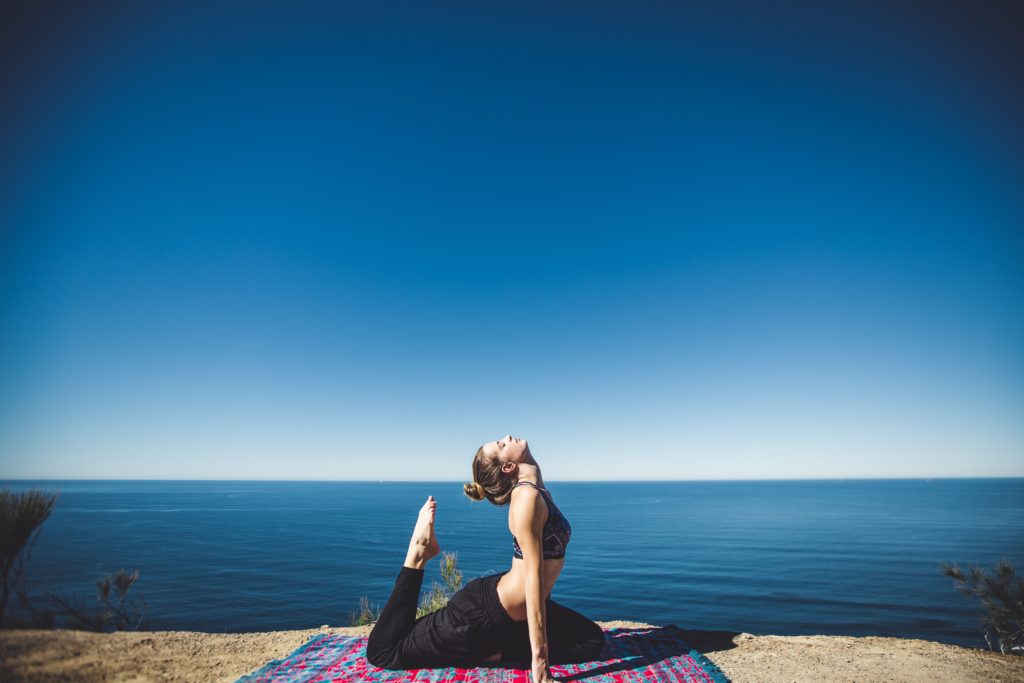
By Greg Freitas and Natalie Compagno
The days of mismatched dumbbells and a stationary bike are officially over. The latest trend in hotel wellness combines state-of-the-art, enhanced spa and fitness centers with heart-pumping, adrenaline-filled, off-property excursions. The latest offerings emphasize getting out, getting fit, and exploring the local scenery.
How about learning to surf perfect waves while attending a conference miles from the beach? Or taking a break from the pool to bike spectacular trails with the whole family? Or turning your daily yoga practice into a once-in-a-lifetime experience–a helicopter ride to a remote mountaintop for sun salutations at sunrise? The sky’s the limit.
Surf’s Up at Sawgrass
TCP Sawgrass Marriott in Ponte Vedra Beach, Florida is synonymous with golf, but for those who’d like to try something different: Surf’s up! Enter the SurfStream Wave Machine, the world’s first stand up wave generator–the resort was the first to install the system in North America. The machine produces seven different types of waves of various heights for everyone in the group, from grommet to Big Kahuna. North Florida’s perpetually warm weather makes this an ideal year-round location for business groups and families alike. The hotel has recently offered the SurfStream Wave Machine Package to get guests and groups up on the waves multiple times per visit. Cowabunga!
Two-Wheeled Adventures
In the Palm Springs region, Miramonte Indian Wells Resort and Spa knows that there is more to the Coachella Valley than golf and tennis. The vast desert landscape beckons, so the Miramonte Extreme package delivers active explorations of the local terrain. Their partner Big Wheel Tours whisks guests away in Jeeps to hike, bike, and explore with knowledgeable, enthusiastic guides. The desert heat can wilt even the hardiest adventurer, so having a support vehicle with water and snacks is invaluable. One highlight is a 20-mile descent along the infamous San Andreas Fault, with very little pedaling required. Guides remark that it is one of the safest places to be during a massive earthquake; most riders are not eager to find out.
Amira Resort opened in Saint George, UT in late 2017, with a magical proximity to abundant outdoor activity. During winter, skiing is available at Eagle Point or Brian Head, north on I-15. Refreshing lakes tempt travelers during hot summer months, as does legendary Zion National Park. The hotel maximizes these advantages with access to two local treasures, the best mountain biking in southern Utah at their door, and shamanic practitioner Gwen Moon.
Moon has practiced in the region for decades, working with sound baths, massage, and energy centers. At Amira she also leads guided nature hikes into the red rock canyons, educating visitors on the folklore, flora, and fauna. The canyons are also home to the Bearclaw Poppy network of mountain bike trails. The 11-mile namesake trail provides adrenaline thrills for all levels, with enough jumps and gnarly descents to challenge the hardcore. The hotel will soon partner with the city of Saint George to bring bikes on property for guests to rent. For those who crave relaxation there are two heated pools and a full-service spa.
A high-end wellness retreat that also combines off-property exploration, the Ritz-Carlton in Waikiki Beach introduces its new Luxury Wellness Package. The immersive, three-day experience combines spa treatments which emphasize traditional Hawaiian healing methods, and local oils and plants. The hotel then takes guests on a cultural excursion (huaka’i) to the Manoa Valley to visit the source of the fresh ingredients and commune with Papahanaumoku (Mother Nature). Private yoga sessions and a private in-room chef deliver more deluxe delights.
For urban explorers, Westin Hotels RunWestin provides three or five-mile route maps along city streets or peaceful rural trails. If running shoes are too bulky to pack, no problem–partner New Balance obliges with the perfect fit delivered directly to your room. In select locations, a Run Concierge keeps up the pace for groups or motivated individuals.
Let’s Get Physical
For those who haven’t tried it, Muay Thai (“Thai boxing”) is one of the most hardcore workouts on the planet. Its popularity is exploding among Western travelers, and no longer just in sweaty gyms—the sport appears on the menu of some of the most luxurious resorts in Thailand. The Anantara Phuket Layan Resort & Spa installed a state-of-the-art Muay Thai ring, with seasoned instructors providing advanced guidance for new or experienced boxers. The focus on learning new techniques keeps it fresh for all levels.
Standup Paddleboard (SUP) is fun for everyone and provides an intense core workout. The Kahala Hotel & Resort in Honolulu kicks it up a notch with an entire menu of SUP options, where floating in Hawaii’s pristine waters add that extra touch of balance and magic. Is SUP Yoga already a passing fad? Try SUP Tai Chi, or even SUP Barre.
Yoga New & Improved
Mandapa is a lush jungle resort in the exclusive Ritz-Carlton Reserve collection. Located in Bali’s spiritual heart of Ubud, Mandapa offers guests access to an indigenous Balinese village, providing a sensory journey to wellness and nature. Designed as a sanctuary for mind, body, and soul, Mandapa offers specially tailored spiritual, wellness, and health programs. Resident yogi and Ubud native Nanda works wonders with circulation and flexibility using his refined hatha technique.
At the Hard Rock Hotel & Casino in Las Vegas, guests can live the dream by partying all night and working out all day—or at least trying. The Reliquary Spa makes breaking a sweat and getting a relaxing massage a breeze, and the adjacent Juice Bar serves concoctions of all kinds—from healthy juices to caffeinated and alcoholic refreshers. Channel your inner Ringo and ask for the Drum Sticks massage, because traditional massage is just that much better when your expert masseuse can beat those tissues into relaxation with the help of percussion instruments.
For a truly magical wellness excursion check in with the Hard Rock concierge and ask them to book a heli-yoga session. Maverick Helicopters partnered with renowned local yogi Dray Gardener and Silent Savasana to create HeliYoga Limitless, a two-and-a-half-hour adventure that is thrilling and peaceful. Helicopters whisk guests to the breathtaking Valley of Fire State Park, landing on the iconic red sandstone cliffs used in movies like Viva Las Vegas and Total Recall. The site can only be visited by air, making peaceful immersion complete. Once situated atop the peaceful plateau, a certified instructor leads guests through a 75-minute yoga session. Wearing wireless headphones, the class focuses on balance and focus. The $3499 price tag covers up to six guests—a small price to pay for the wellness experience of a lifetime.
La Belle Epoque
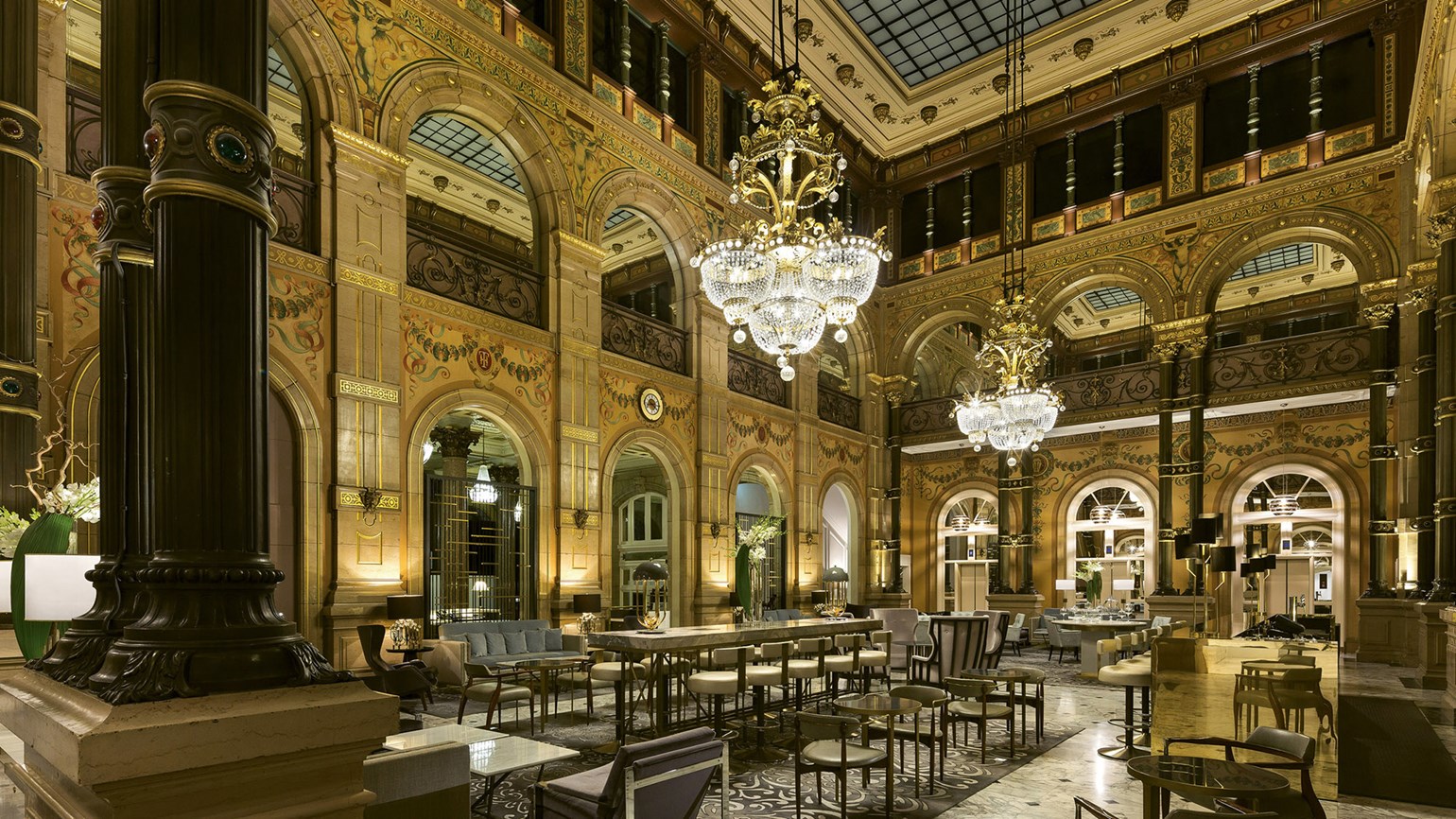
A cultural hub for artists and aristocrats eager to hobnob at the 1889 Paris world’s fair, the Grand Hotel Terminus was also the entry point for another subset of travelers: Tourists, primarily from the U.S., England and Normandy, would frequent the elegant hotel due to its direct link to Paris’ largest railway station, Gare Saint Lazare.
Today that hotel, now known as the Hilton Paris Opera, is busier than ever and more beautiful, thanks to a $50 million renovation completed in 2015.
For my recent hosted stay, the flight from New York to Paris Orly West via British Airways subsidiary OpenSkies proved to be a convenient option for getting to and from the City of Light. While Gare Saint Lazare remains one of the city’s main transportation hubs, it’s the area that’s emerged around the property that continues to draw tourists and business travelers alike.
Considered the heart of Paris’ shopping district in the 9th arrondissement, the Opera Garnier neighborhood is home to two of the city’s largest department stores, Printemps and Galeries Lafayette, as well as the beautifully preserved Palais Garnier opera house, all of which are a short stroll from the hotel.
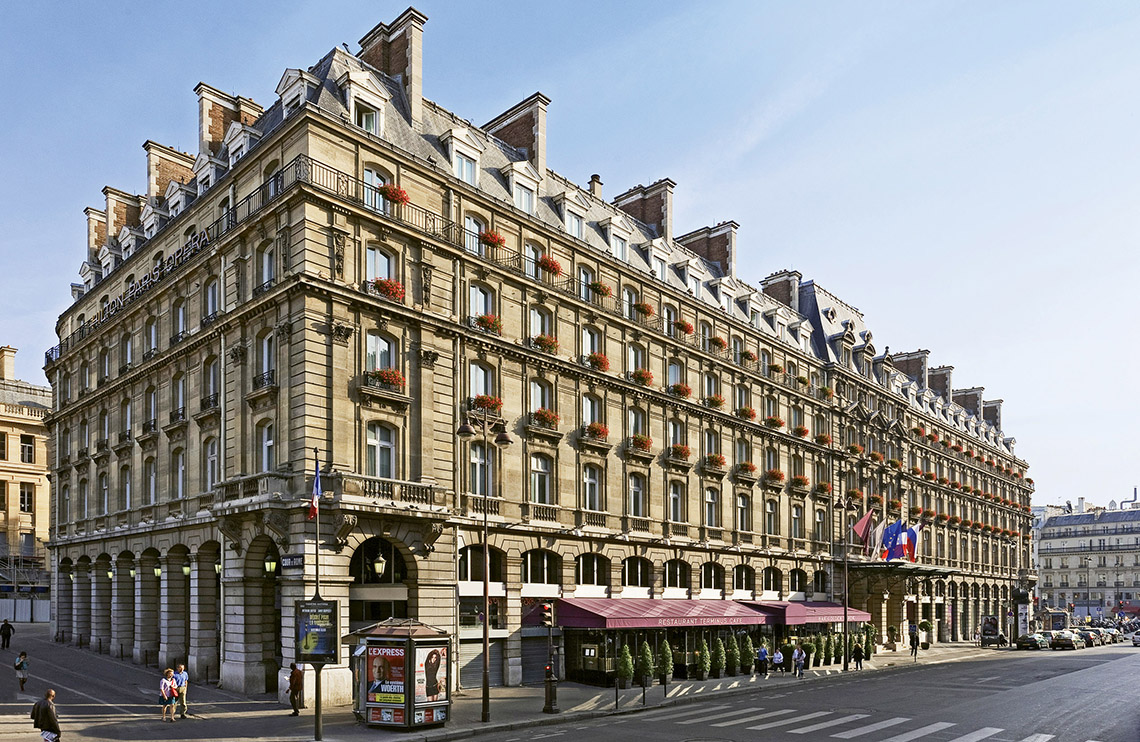
Today the Hilton Paris Opera is a reflection of its surroundings. A mix of modern-day Paris and its belle epoque decor, the hotel’s signature Le Grand Salon — adorned head to toe in hand-painted frescoes, Corinthian colonnades and original balustrades — has been pristinely preserved to evoke Paris’ golden age.
The salon also happens to be the perfect place to post up and enjoy a glass of Sazerac or Calvados (try the Calvados mule for something truly special) while attempting to find the “naughty angel” lurking along the upper arcades of the room. The salon also features a blend of bar bites and Parisian croque-monsieurs with ham or salmon, burgers, club sandwiches and seasonal quiches and salads among other notable dishes.
Le Petit Bar, or LPB for short, is a diminutive speakeasy-style spot that’s tucked away near the hotel’s front entrance. The bar serves a bit of privacy along with vintage-inspired cocktails served in mugs and teacups, and, on Saturday nights, boas, bow ties and live music are in full swing.
Moving to the boudoir, each of the 268 rooms (including 29 suites and 58 executive suites) feature modern touches, including WiFi, a work desk and USB ports. With a healthy dose of classic Parisian style, the rooms’ neutral color palette and ample natural light are only complemented by the bathrooms’ heated floors and rainfall shower. For guests staying in an executive suite, continental breakfast is served in the Executive Lounge each morning and canapes and refreshments in early evening.
Rooms start at about $330 per night. See www.hiltonparisoperahotel.com.
Celebrate in Las Vegas

Photo courtesy of Thinkstock
There’s no denying that Las Vegas embraces cultural diversity. Even a short list of themed hotels gives nods to France (Paris Las Vegas), Burma (Mandalay Bay), Venice (The Venetian), Egypt (Luxor), Brazil (Rio) and Asia (Lucky Dragon Hotel and Casino). Here are the reasons to visit Las Vegas this year.
Cuisine
With its distinctive blend of East and West, Las Vegas Chinatown Plaza buzzes with Orientals purchasing traditional products and Occidentals exploring Asian culture. The plaza provides the city’s largest sampling of Asian cuisine that runs from Mandarin, Cantonese and Vietnamese to Japanese, Hawaiian and Chinese. Culinary aspects aside, visitors can catch the Year of the Rooster hoopla on Feb. 12 via dances, performances, cultural activities, a calligrapher, fortuneteller and vendors.
Wing Lei at Wynn Las Vegas will resurrect its Dim Sum Brunch with dozens of traditional Asian delicacies served tableside, and at carving stations in its extravagant buffet.
Patrons at Lucky Dragon Hotel & Casino are in for a treat with Pearl Ocean’s prix fixe menu available from Jan. 28-Feb. 5. The live seafood and dim sum restaurant features a menu with stir-fried conch, Dungeness crab, and lotus root, black moss and pork tongue soup. In its live seafood room, guests can select living exotic delicacies flown in daily for preparation in both traditional and modern culinary styles.
With complementing styles from Jose Andres, China Poblano at The Cosmopolitan of Las Vegas will lure with a bevy of Chinese specialties from that includes fat choy, feng and dried oysters. On the spirits front, the restaurant will serve 50-year-old Hardy Noces d’Or Cognac from a rooster branded crystal bottle.
Other culinary options that will appease palates hankering for Asian cuisine are Fin at The Mirage, Hong Kong Café at The Venetian Las Vegas, MR CHOW at Caesars Palace, Cha Garden at Lucky Dragon Hotel & Casino, Blossom at ARIA Resort & Casino, and the new Momofuku at The Cosmopolitan of Las Vegas that debuted on Jan. 10.
Decor
The Palazzo’s Waterfall Atrium and Gardens goes to theme with a horticulture and floral display dominated by a 15-foot tall fire hand-painted and covered with some 60,000 crystals. An 18-foot tall dragon will adorn the atrium’s infinity pond, while eight smaller hand-carved roosters are sprinkled throughout the resort.
Each season, the talented designers and horticulturalists of the Bellagio Conservatory team transform the 14,000-sq. ft. floral playground within the Conservatory & Botanical Gardens at Bellagio into a showcase of the distinctive seasonal sights. A special display for Chinese New Year stands out as a singular celebration.
After entering the colorful gardens through a Moon Gate, guests find four ding pots burning incense to protect against bad fortune and bring good luck. The display also salutes the Lunar Calendar with a rooster perched atop a mountain, hen guarding her eggs and newly hatched chicks.
Encore Las Vegas and Wynn Las Vegas will sport large rooster statues, lanterns, silk dragons and 100-plus tangerine trees symbolizing wealth and good fortune in the upcoming year.
Entertainment
Yet, it wouldn’t be Las Vegas without a bit of a twist.
Credited with popularizing “Cantopop” by infusing Western-style music with street Cantonese jargon in his lyrics, Hong Kong musician Sam Hui will take the stage in The Venetian’s ballroom on Jan. 28. Considered by many to be the first major Cantopop superstar, Hui will bring his “Fun Fun Fun” tour to Las Vegas with a special guest performance by Shannon Lee (daughter of martial artist Bruce Lee).
With its members releasing more than 80 albums combined, Chinese pop-rockers Band of Brothers will light up The Park Theater at Monte Carlo on Jan. 29.
When greeted with “Gong Xi Fa Cai” during Chinese New Year festivities, simply respond with the same phrase – meaning, “Wishing you a prosperous year, too.”


